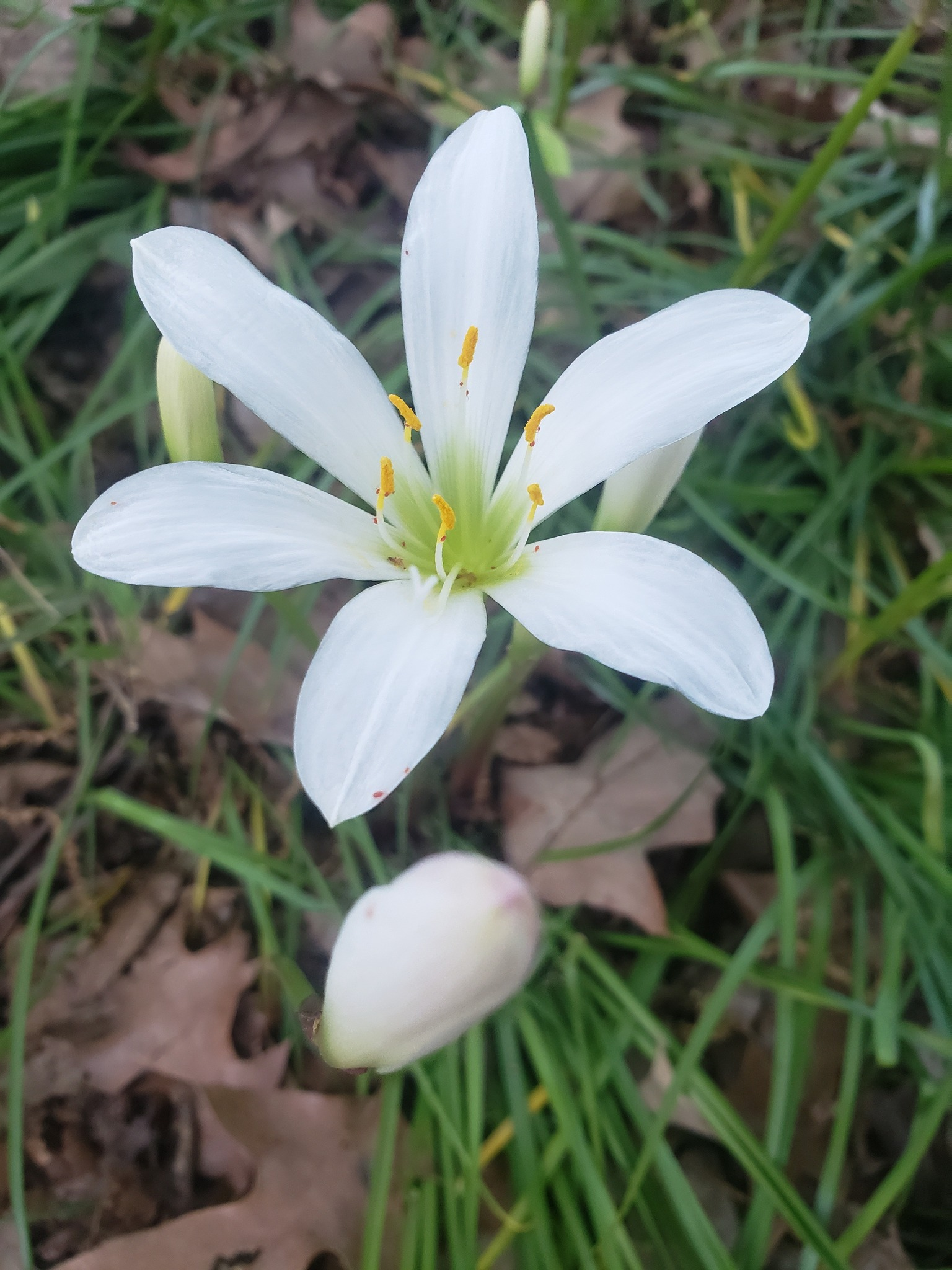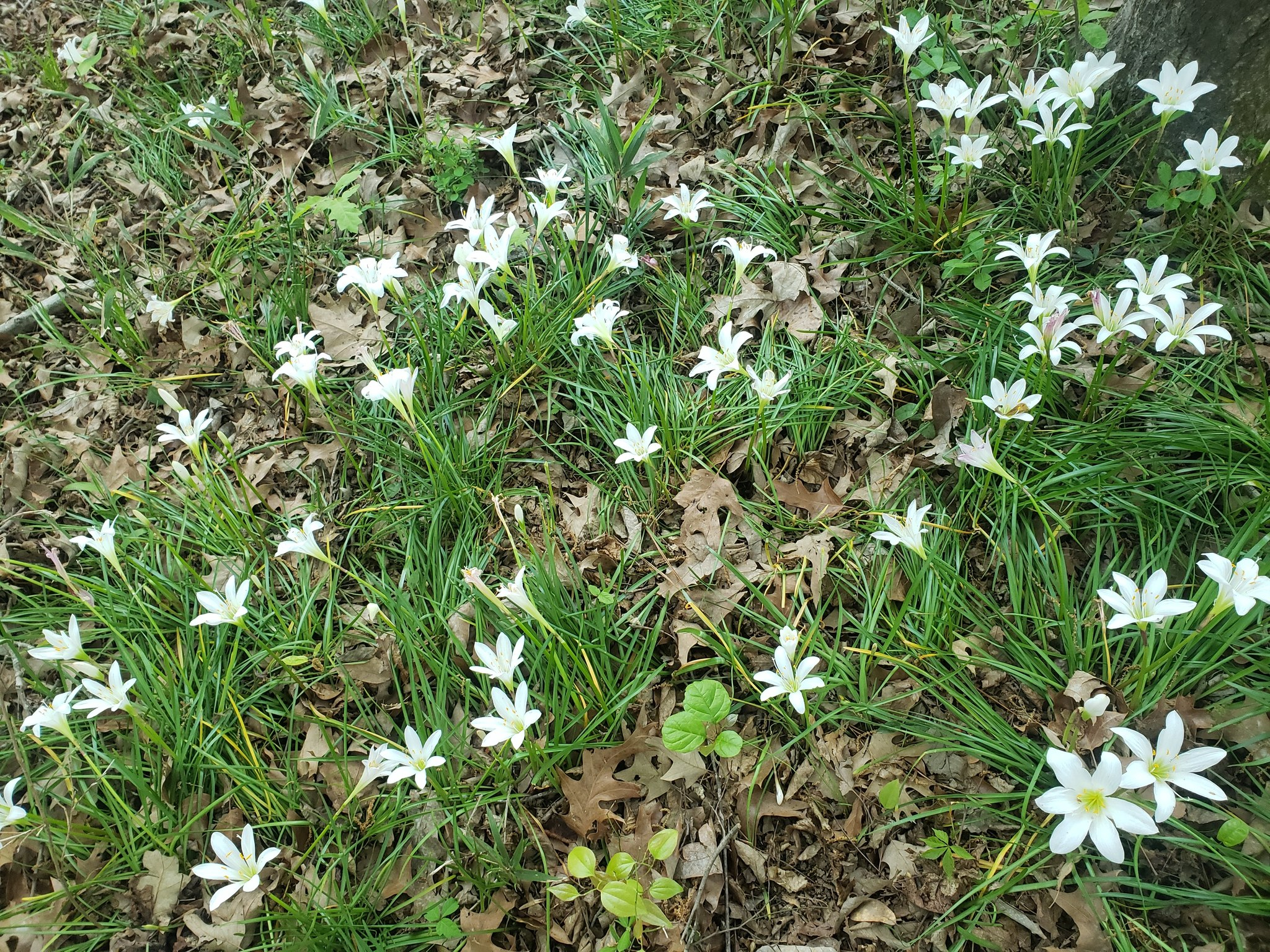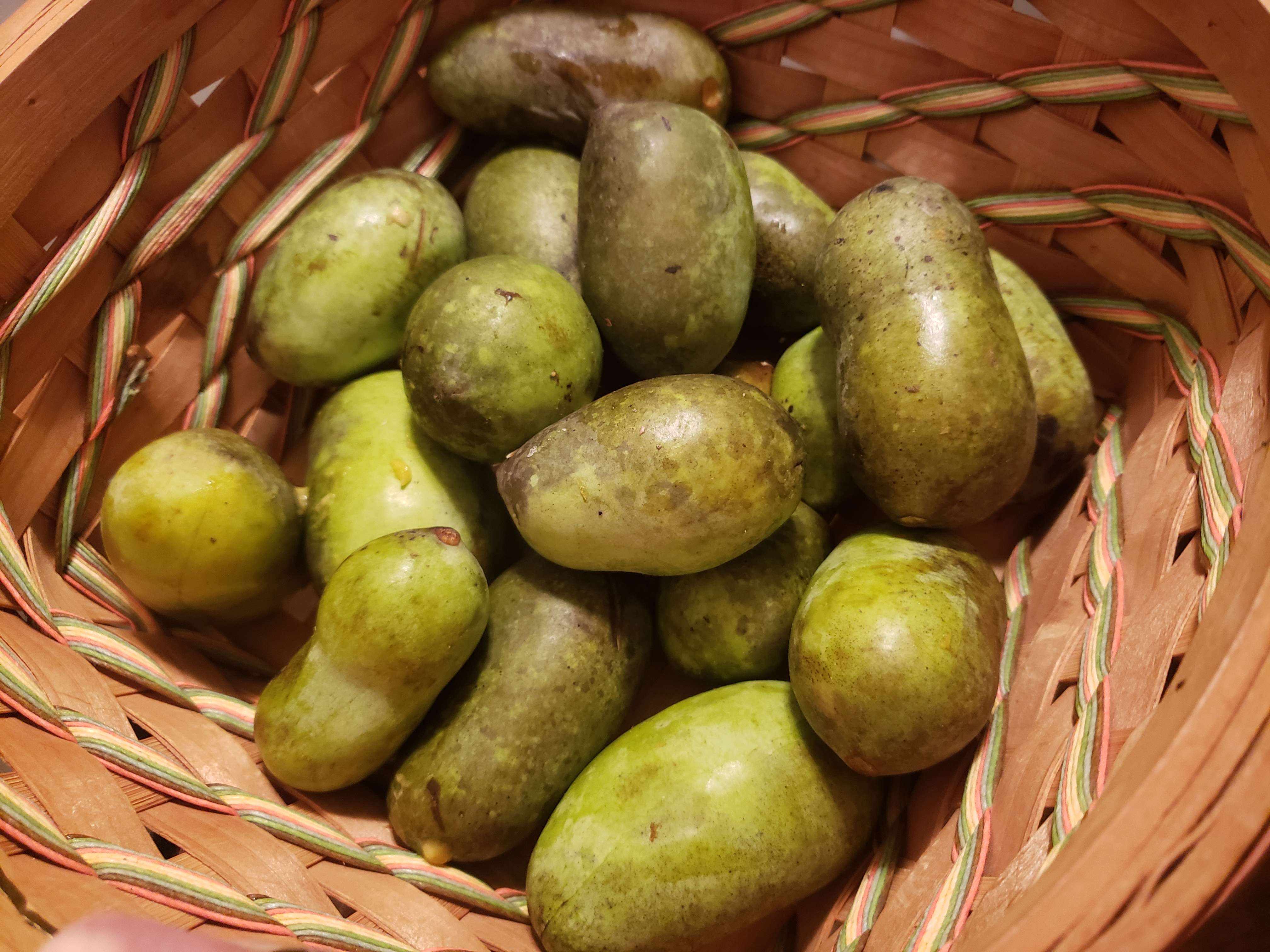Plants
!!!Warning!!!

Irresponsible foraging can result in serious harm to yourself and others including painful death.
It can be difficult to distinguish features on plants and mushrooms. Although I believe there is a disproptional amount of information and social stigma
regarding the general safety of eating wild plants and mushrooms you should use every resource available to you to identify anything before consuming it.
Never eat anything that you can not identify with certainty. Some plants and mushrooms are deadly even in small amounts.
Please forage responsibly.
This page is still a work in progress. Best viewed on desktop.
More photos and descriptions to be added. Please check back later.
Last update: January 4, 2026.
Wood sorrel is one of the first edible plants I learned to identity. It's often confused generally with clover which is fortunately also edible and looks very similar. Notice that the heart shape of the three leafs is the difference between the two. This species of wood sorrel grows yellow flowers. Other species feature different color flowers and even patterns on their leafs. Leafs and stems are edible and have a bright lemon flavor. In the future I plan to use it as a garnish on wild catfish that I catch.
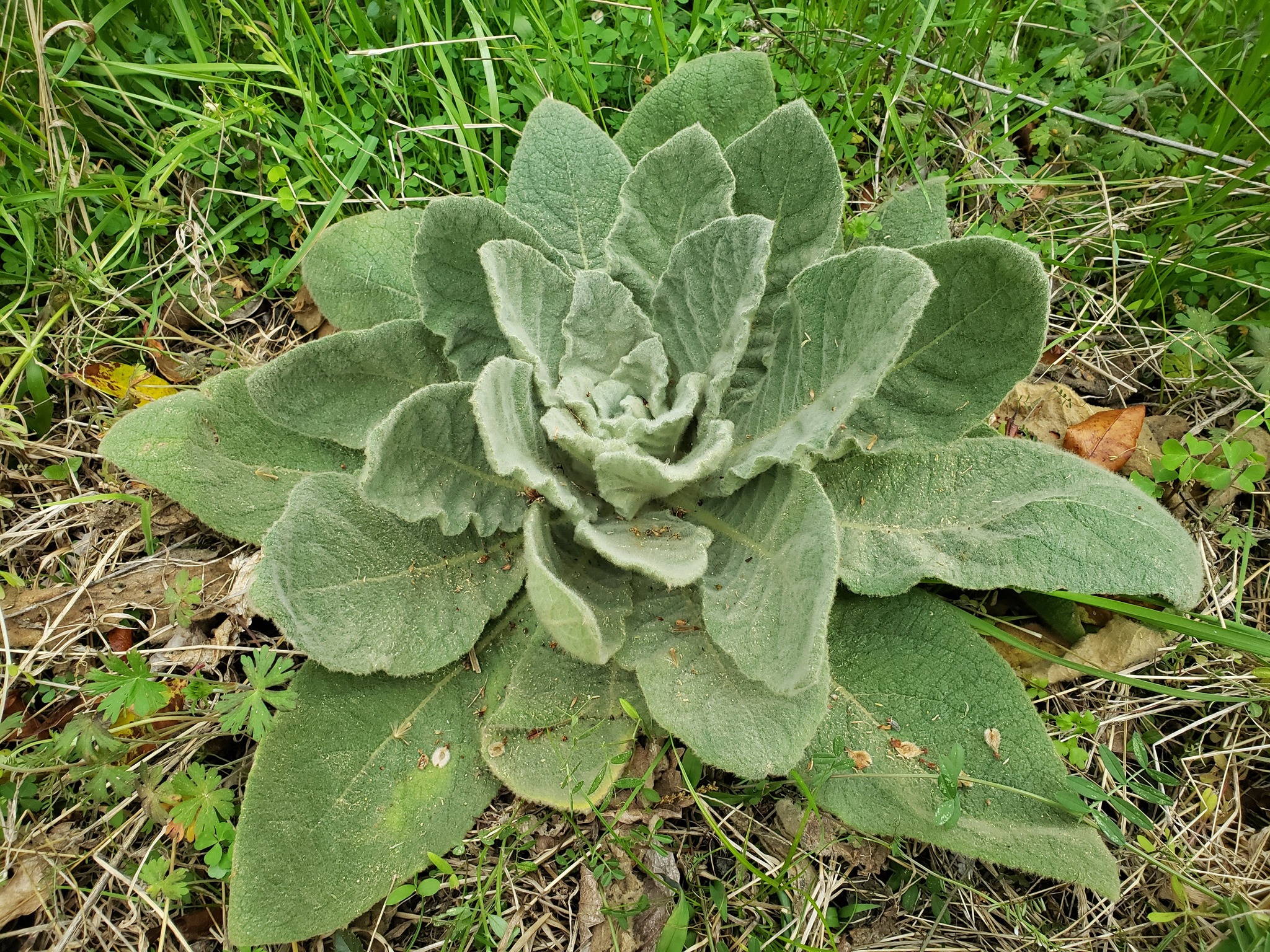
Mullein is easily recognizable because it is extraordinarily soft and fuzzy. There is some literature and folk tales about it being used for pillows and padding inside shoes. It grows in a rossette like the way lettuce does. In its second year of growth it sprouts a large stem from its center and hundreds of yellow flowers grow from it. I read it is edible after cooking but I haven't tried that. I have smoked its leafs though. It's very common to do so around the world. The native tribes living in what is now called The United States used it in rituals to repel bad spirits. It is peppery, and light and also has a noticable effect in improvnig your breathing if you are feeling sick or congested. Its seeds are also a piscicide (poisonous to fish). I've read reports of unethical fishers using it to stun fish and collect them in large quantities. I strongly reccommend against doing this (and the law does too) unless you are in a survival situation.

Wisteria is a favorite spring smell. It blooms in early spring and is often seen cascading down from trees at the edge of the forest. It is considered invasive for how prolifically it grows and shades out light from our native plants. Help yourself to the flowers. Put them in your bag for an easy freshener. Collect large amounts for a home made perfume. Unfortunately it does wilt rather quickly after removing it from its vine so plan accordingly if you intend to use it for photos or anything else.
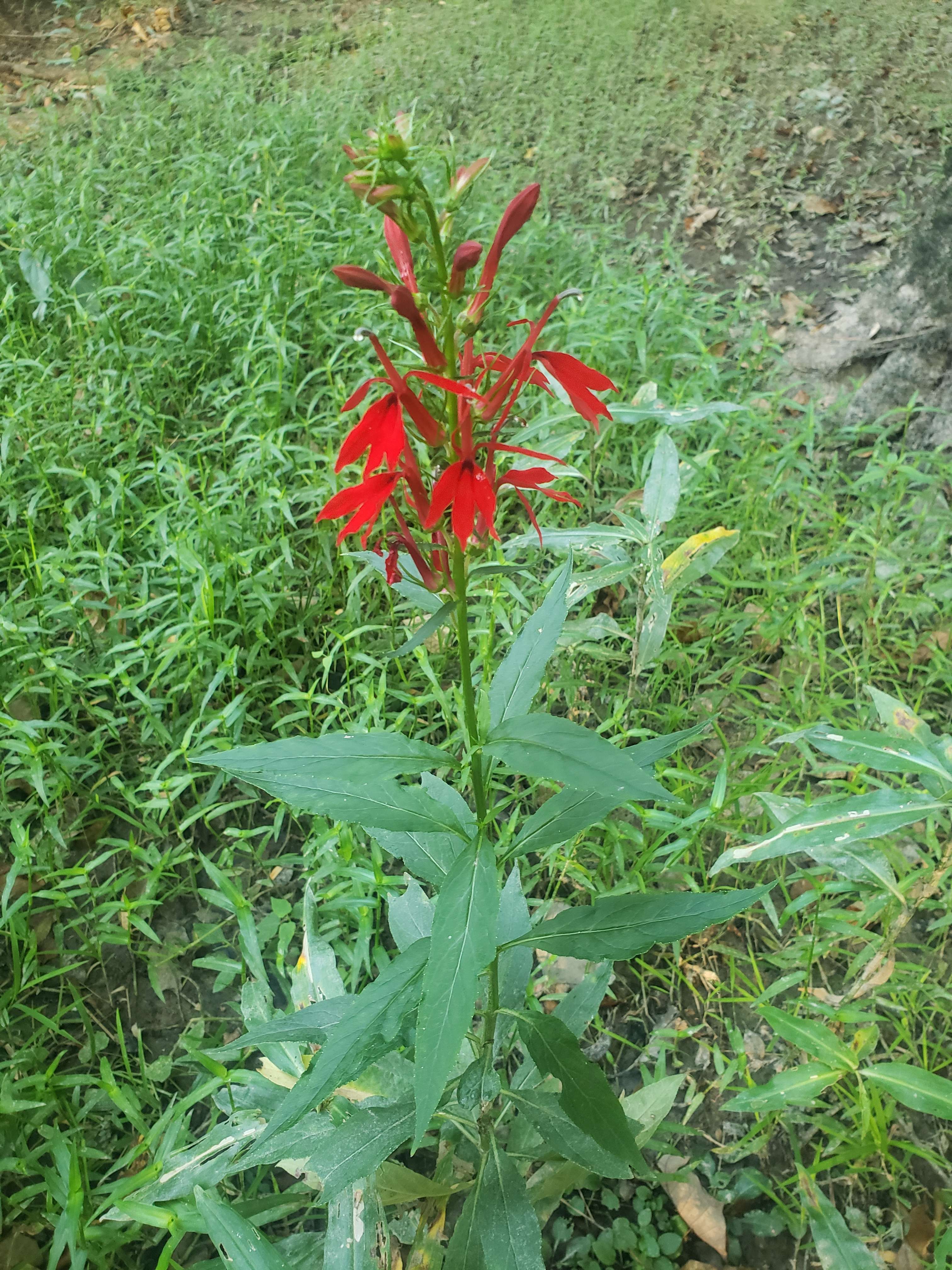
This very showy plant is the cardinal flower. Apparently very popular with butterflies and hummingbirds. I like it too. I don't know much about this plant. I don't know if it has any particular medicinal effects or culinary use. Sometimes pretty is enough. I found this one by itself but later found more all growing right by each other. It's vibrant scarlet color can be noticed from far away in the wetlands.
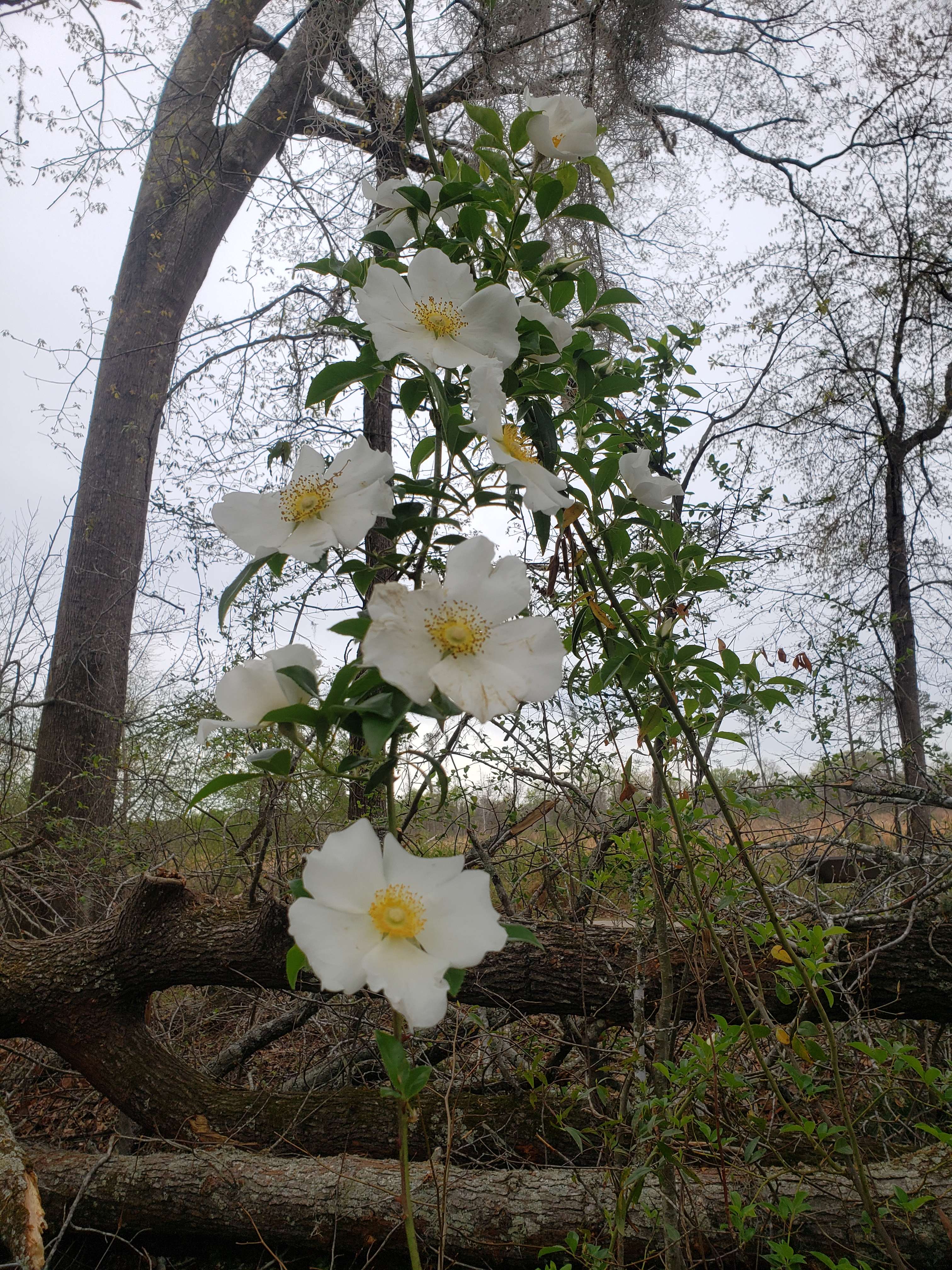
Don't be swayed by fantasy and an imagined nationalist pride. The phrase 'manifest destiny' is pretty gross to think about when you realize the horror underneath the propoganda. The Cherokee Rose is apparently often dipicted as a symbol of the natives struggle against English American settlers. Shame on our education system for not fostering a closer connection to our plants and our history. And shame on me for not wondering enough. I have read it's in stories and paintings but I can't entirely confirm or say much about that. But maybe I've planted curiosity in you, Reader, and you can help restore some history and truth back into the world today.
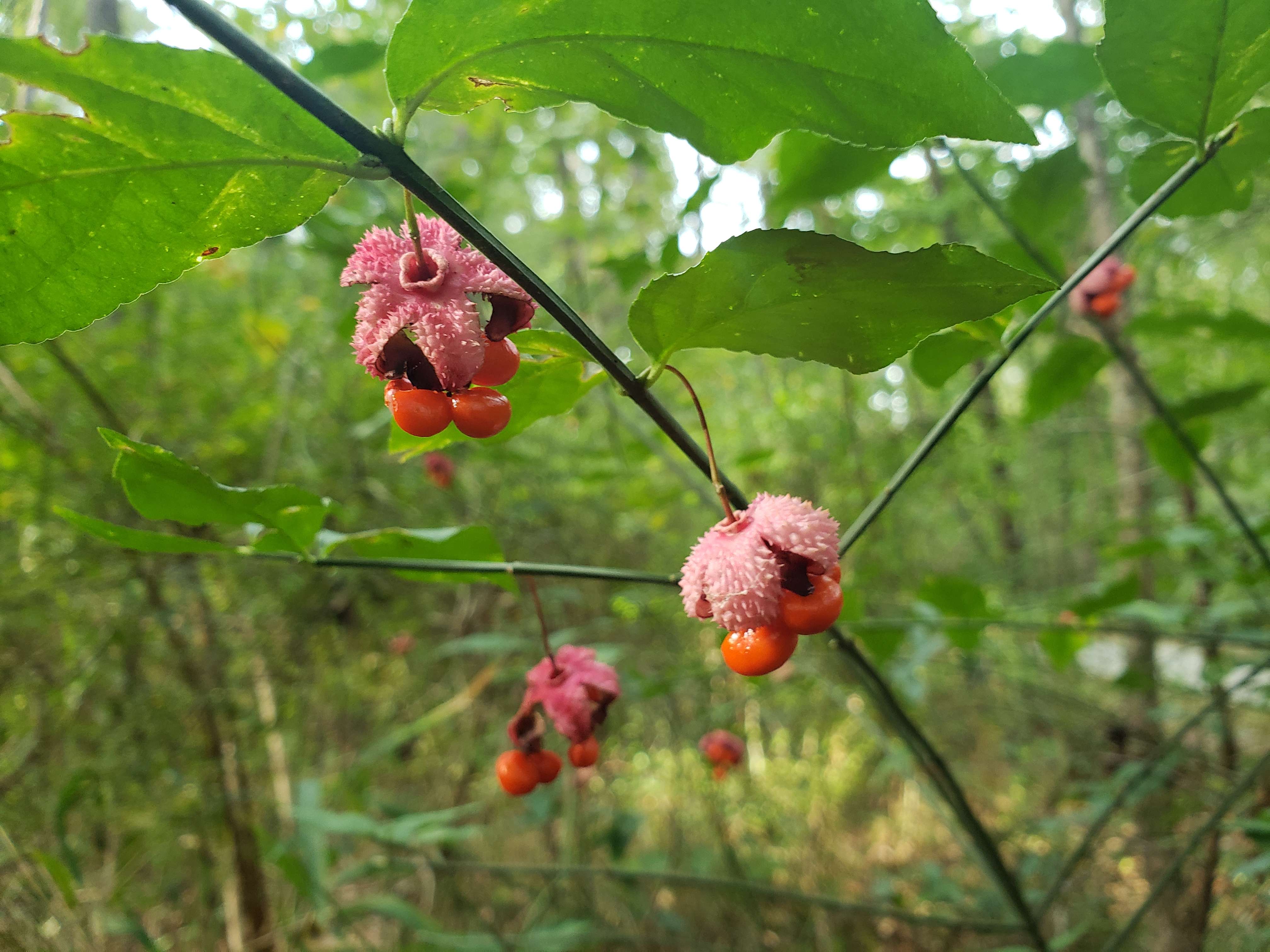
I found this bursting heart strawberry shrub in the autumn and was very thankful for it's colors in an otherwise dull orangey brown and grey environment. It's apparently very favored among some birds and deer. To creatures like us though it's reported to be mildly poisonious. I was bold (stupid) and tried it anyway and found unfortunately it doesnt even taste like much of anything and is pretty hard and seedy. What a beautiful and unique berry though.

I found Clematis while riding my bicycle one weekend. I was so excited to smell it again on my next day off but when I came to it it was completely gone as if someone had taken it all. I remember it was spring but this species full name is Sweet Autumn Clematis so I must be wrong. Its bright white flowers were a spectacle against the background of the trail and it's scent was strong, wonderfully sweet with vanilla. Was it just a dream? Then how did this photo materialize in my phone? Some things get lost in the ether.
Day lily blooms in the weeks inbetween March and April. I have to learn patience every year waiting for the leafs to collect enough energy for it's flowers. It is worth it. They smell fantastic. They look so precious. It's such a timeless flower. They disappear in only a few weeks. What a beautiful and painful contradiction.

Goldenrod is often misattributed to many peoples summer allergies. What a sadness this misplaced anger is! If the people only knew the real culprit is another plant called ragweed; but I digress. Goldenrod is a summer flower and flavor. Strip the flowers from the stalk and steep them in near boiling water for 5 minutes or longer if you'd like. Add a small amount of sugar, a very small amount of cinnamon too and you have a very pleasant and refreshing floral tea for those hot southern summers. It grows quite prolifically, about 5 feet tall (1.6m) at the edge of the forest and in unattended fields.
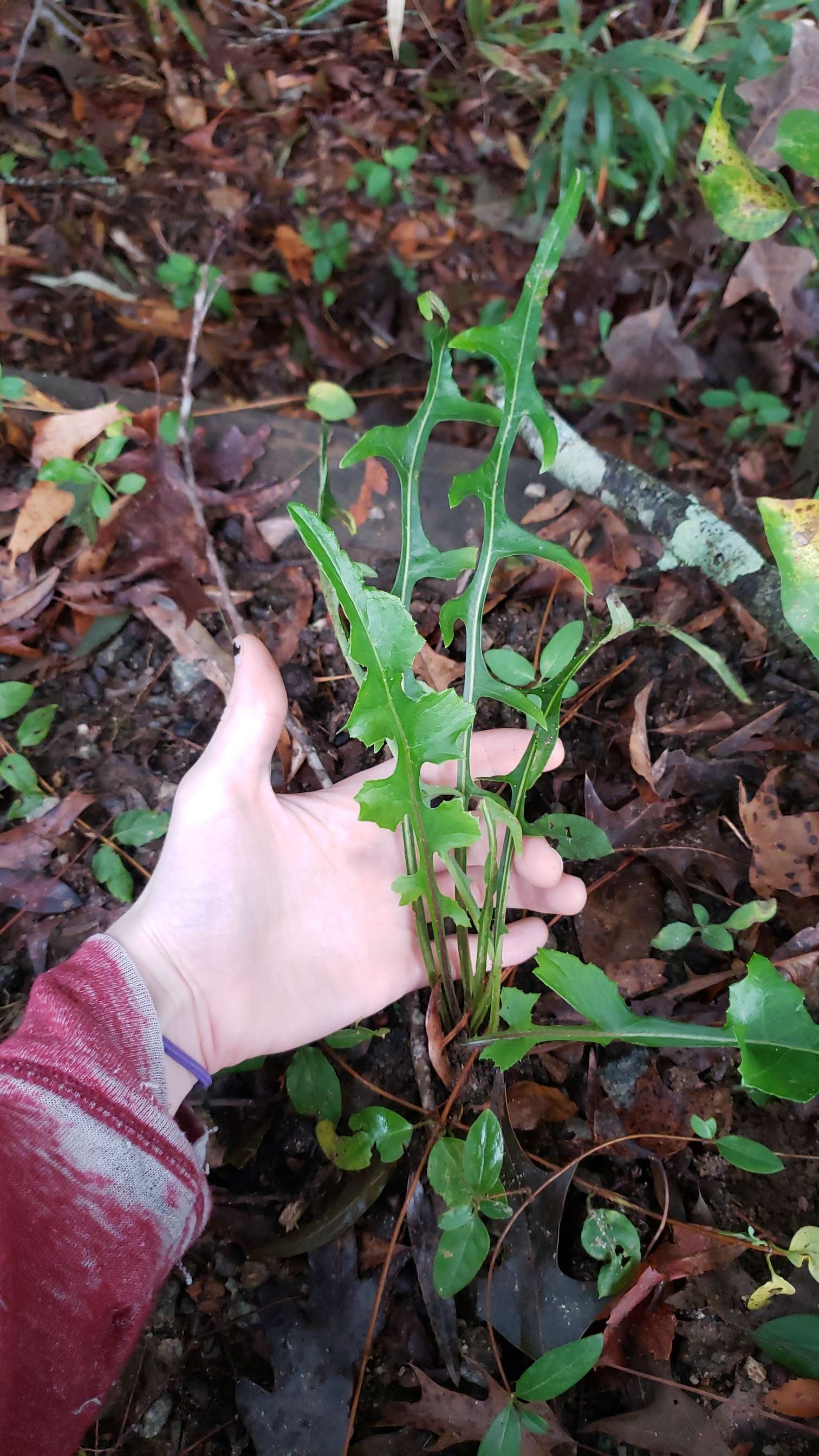
Lactuca canadensis is the first wild lettuce I've found. Turns out there's quite a bit of different kinds of lettuce out there. It's jagged leafs were what grabbed my attention. Upon inspection it had tiny hairs on the underside. I can't exactly remember its taste now so I suppose I'll report unremarkable. I hope there is more though. I'm needing it in my wild green salads.
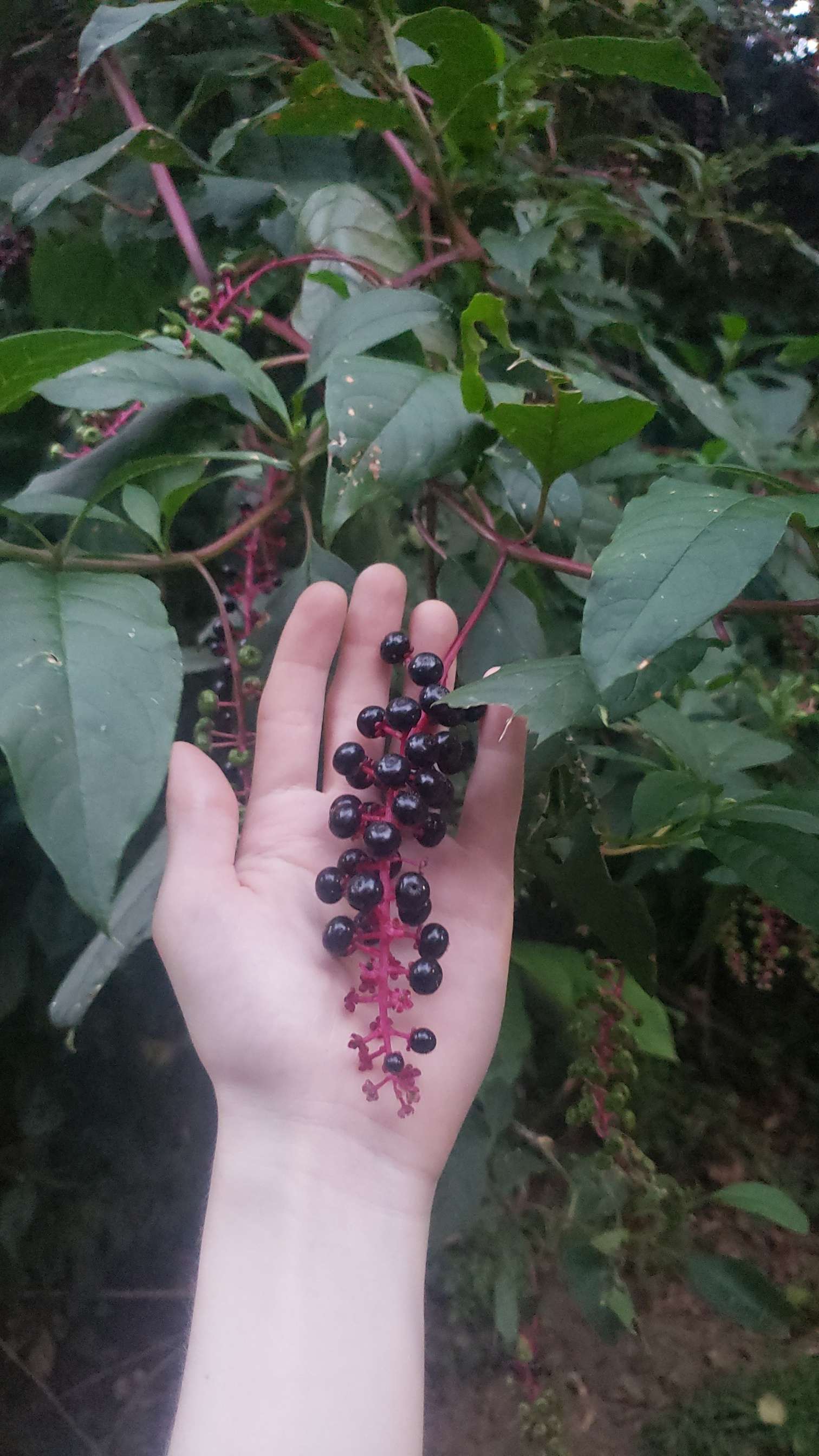
Pokeberry is poisonous. It's leafs are poisonous. It's stalk is a evil red purple with erratic nightmarish branches. How people ever found out that you can dilute the poison from the leafs by boiling them multiple times is miraculous or maybe a tragic torturous experiment. I'm not sure. But poke salad is very much a widely known thing in the south USA even if a lot of people haven't tried it. Admitted I haven't either. Maybe when I get the courage or find someone who can instruct me properly. Its berries can be crushed to make a very good dark red purple dye.
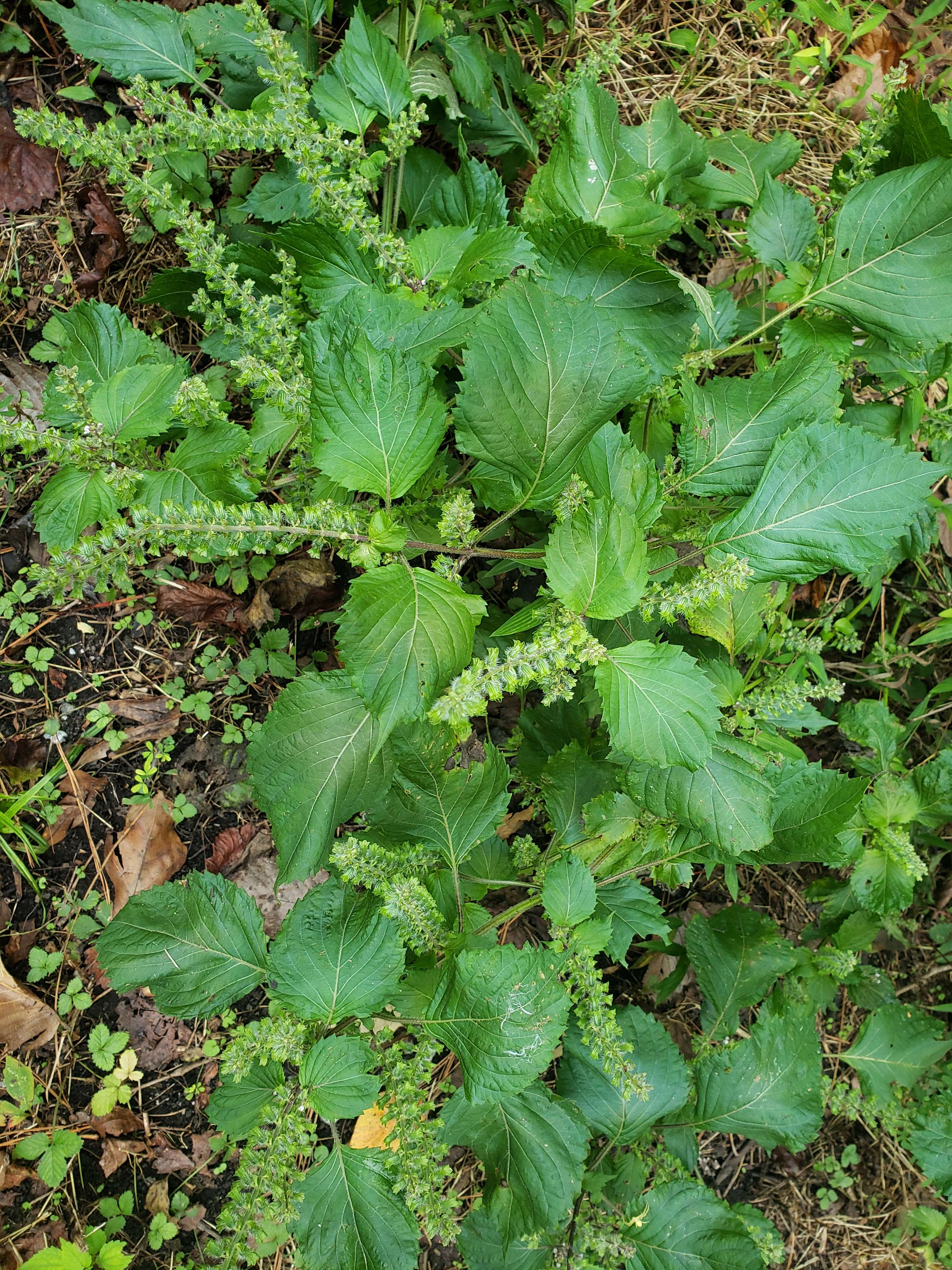
Shiso, or beefsteak plant is in the mint family. I've never really enjoyed mint as a flavor so I mostly just admire this plant. Others think it tastes more like basil but I don't get much that. You can take a leaf and crush it between your fingers to confirm its in the mint family. I read contradictory information about this plant. Some places say it's edible, other places say it's poison. I'm probably not going to be the one to definitively find out. You can enjoy (or not) a couple leafs with only psychic damage though. A friend I have says that its seeds are harvested to toast in other cultures and they taste similar to sesame seed.
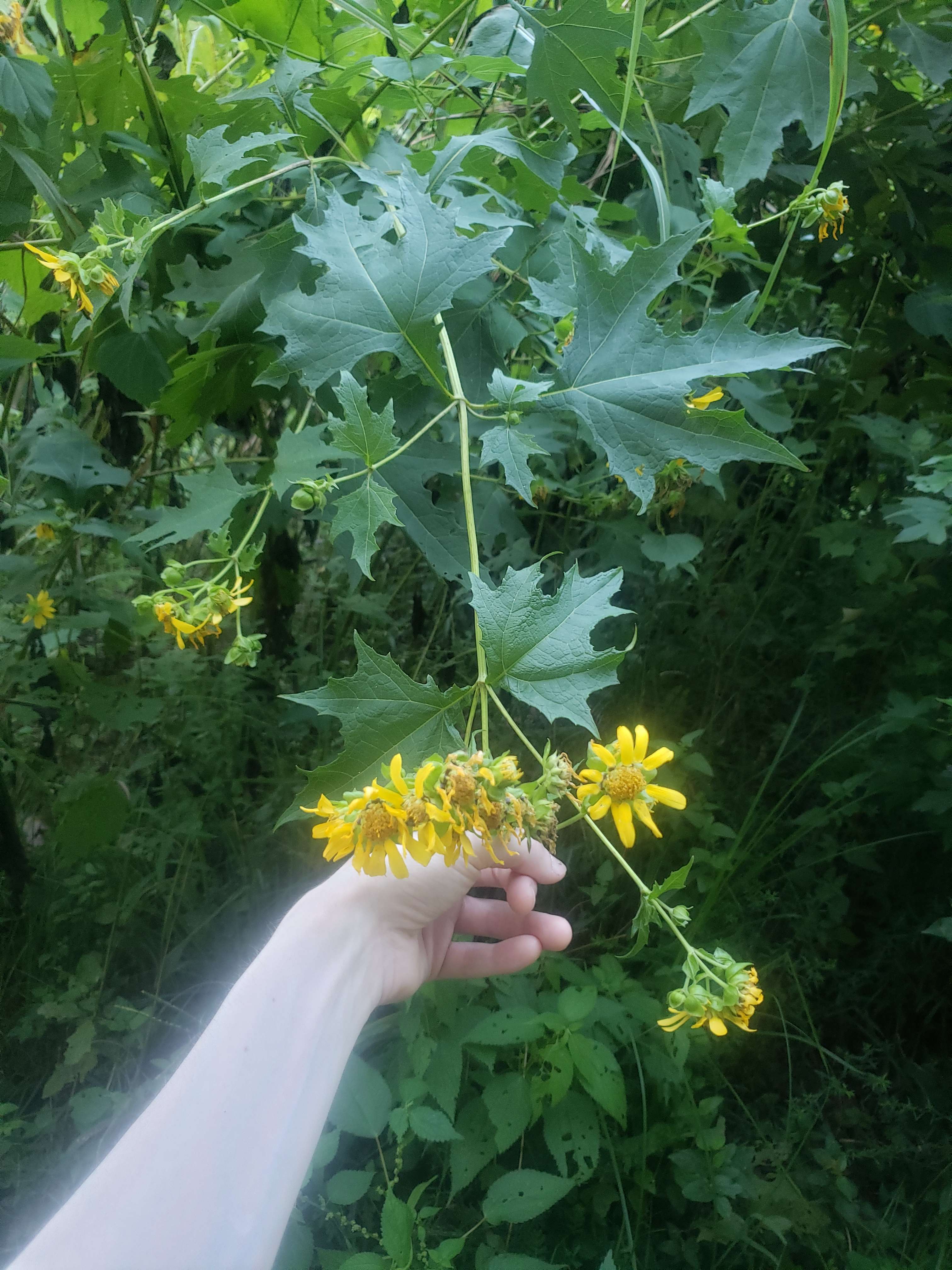
Smallanthus is another flower that appears in late summer around here. I don't know much about it. It's in the sunflower family which is called asteraceae. Looking at it you can see that must be true because of the way-it-is.

Mimosa flowers come from the tree. It's not actually native here and people say you should destroy them but how could you? The flowers are a delightful pom-pom shape and they smell great too. It's safe to steep the flower in hot water for a tea. They bloom in late spring here. Apparently the bark of the tree is pretty good in tea too but I can't confirm that yet.
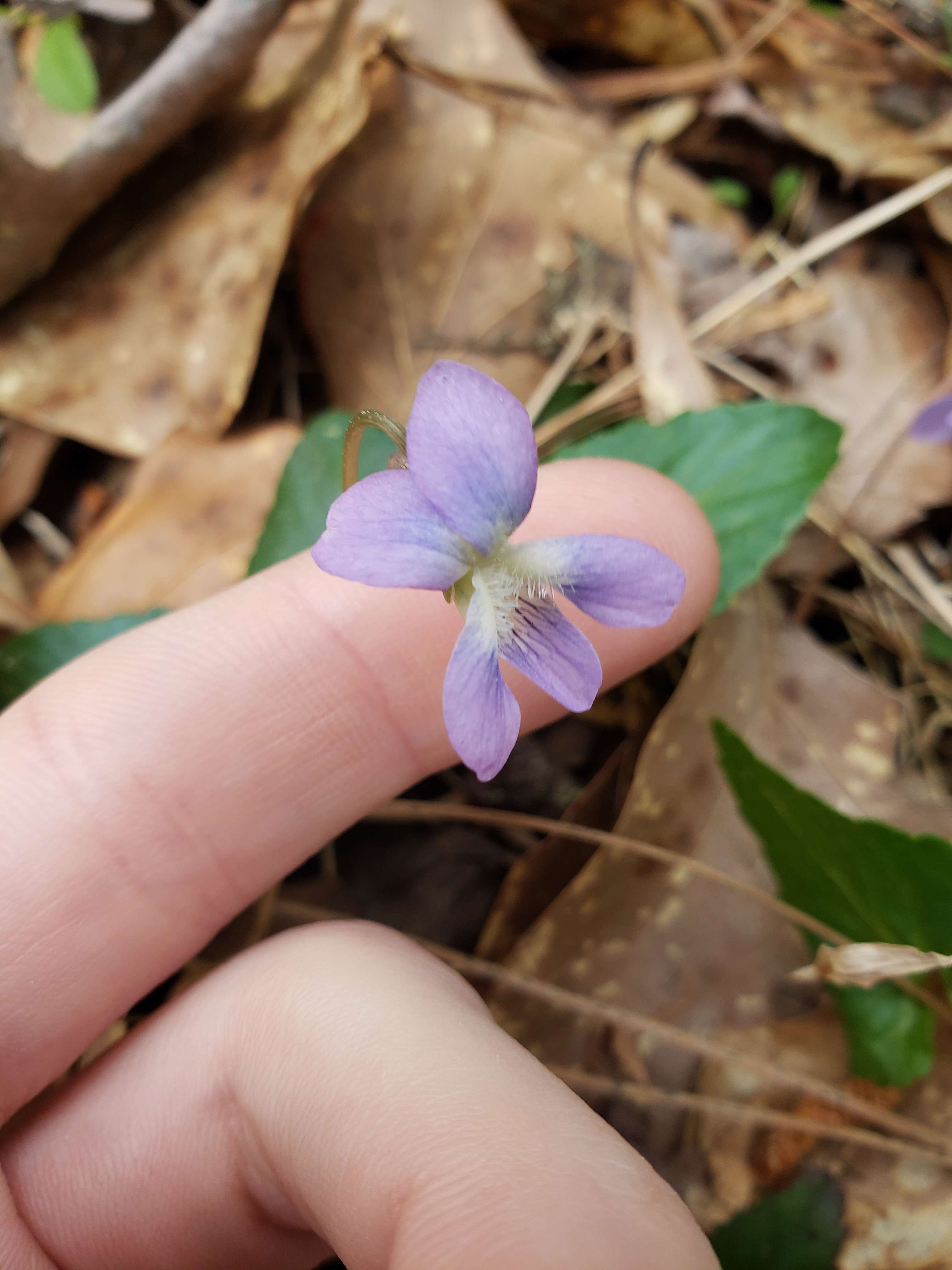
Common blue violets are one of the first signs of spring where I live. The leafs are sort of heart shaped. I enjoy eating them very much. The taste is green but has a unique springy flavor going on underneath. I try to only take one leaf or two if the plant is doing well to not disturb it's creating of a flower too much. Some people pick the flowers and make these pretty blueish purple simple syrups and jellies with them. I suppose if you have enough to do that then you could try it but always be aware that the flower is the reproductive part of the plant and you should try not to disrupt your ecosystem beyond repair.

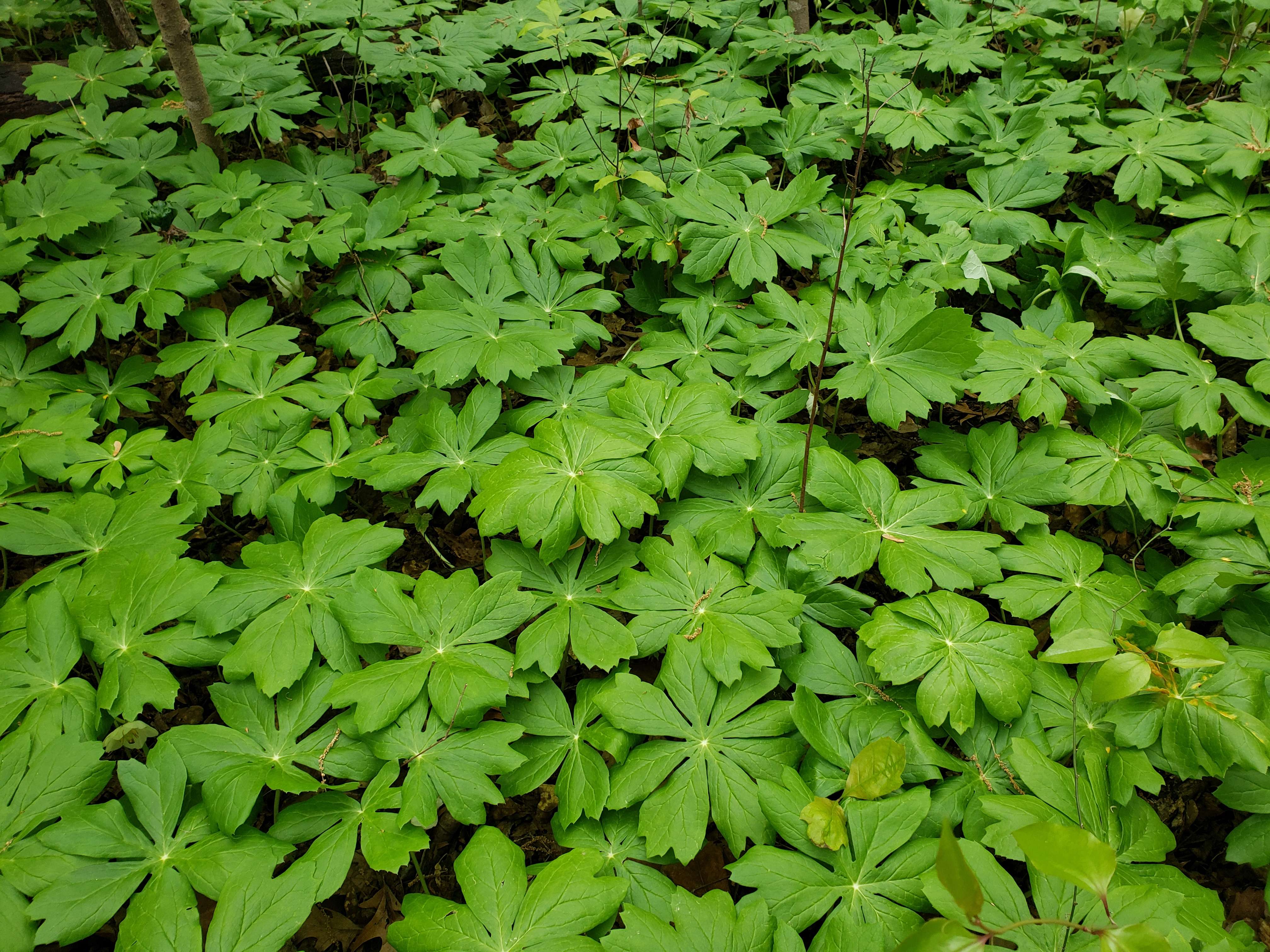
Mayapple leafs are deadly poisonious. Its stem is deadly poisonous. And its fruit is deadly poisonous except when its ripe. And when its ripe it is absolutely delicious. If you love tart or tropical flavors you will love the mayapple fruit. It's like pineapple with lemon squeezed over it. It smells like starburst candy. The easiest way to eat this fruit is to poke a hole in it and suck out the inside. Spit out the seeds while you're at it because they might also be deadly poisonous; although accidentally swallowing a couple of them hasn't killed me yet. They are another sign of spring starting where I live. Its leafs were imagined in a fairy tale before actualizing in our world. Plants with two umbrella leafs will have flowers underneath and will grow a single fruit if pollenated. You will be competing against local wildlife for this fruit. Be vigilant but also considerate.
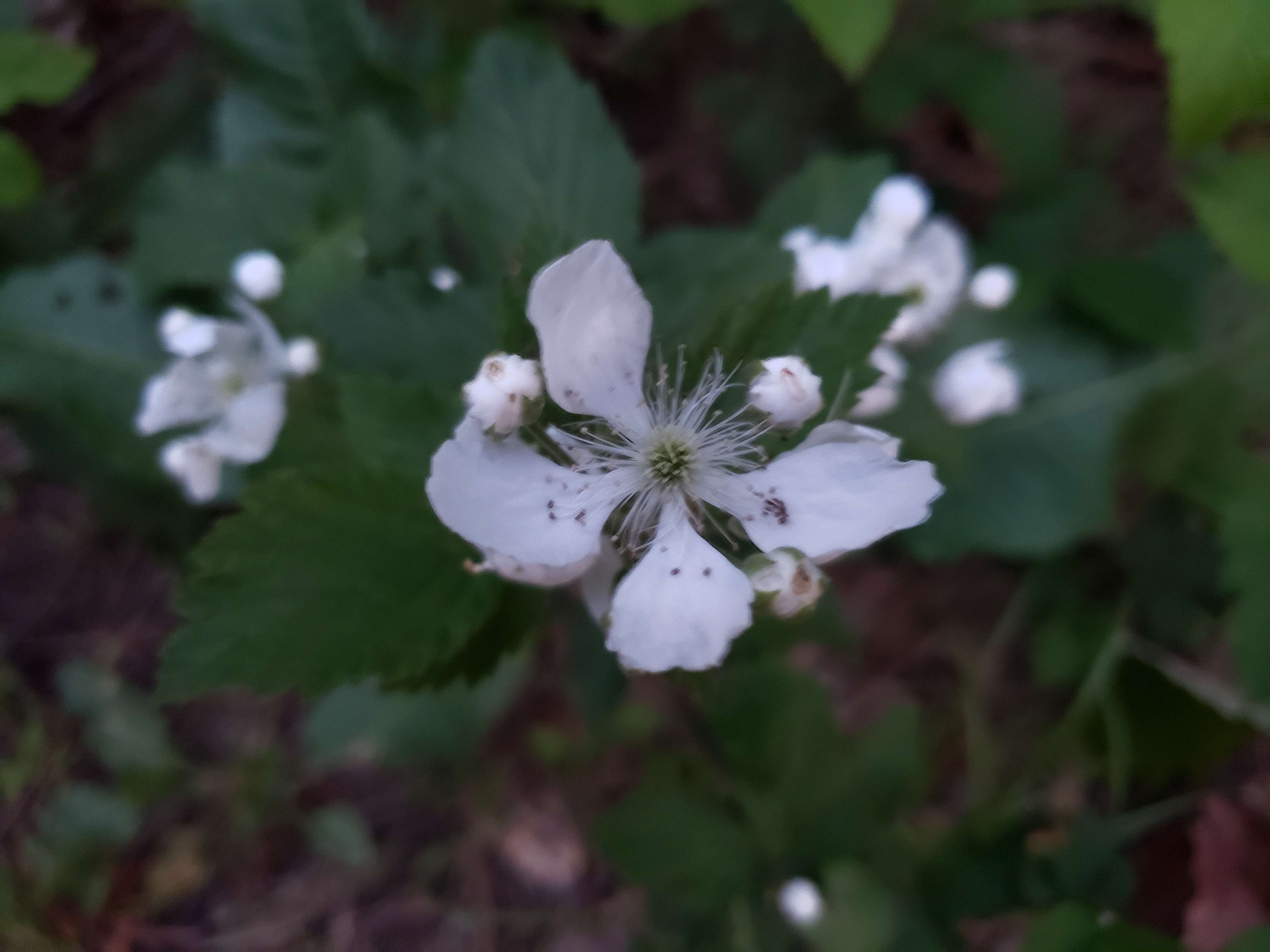
One of my earliest memories is eating blackberries and raspberries off the vines growing at the edge of the yard at my childhood home. Every time I see these blackberry flowers I'm filled with spring hope that maybe this year I'll need a bucket to collect them all. That I will get to them before others or the birds can. I'll have so many that I won't know what to do with them. For whatever reason the past few years I haven't been able to get too many. Maybe other foragers came across them along the trail first while I was scheduled for work. This year will be different though.
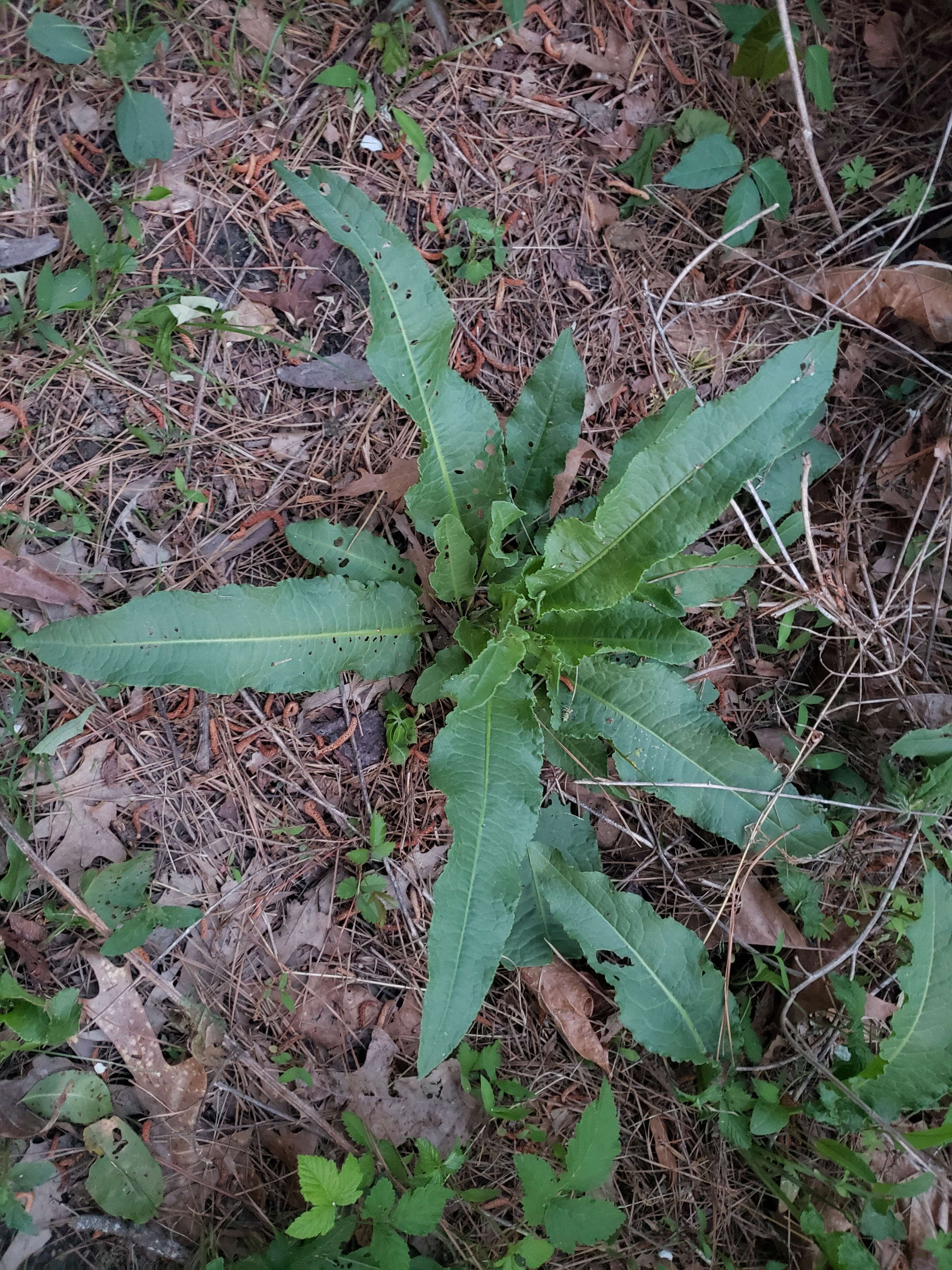
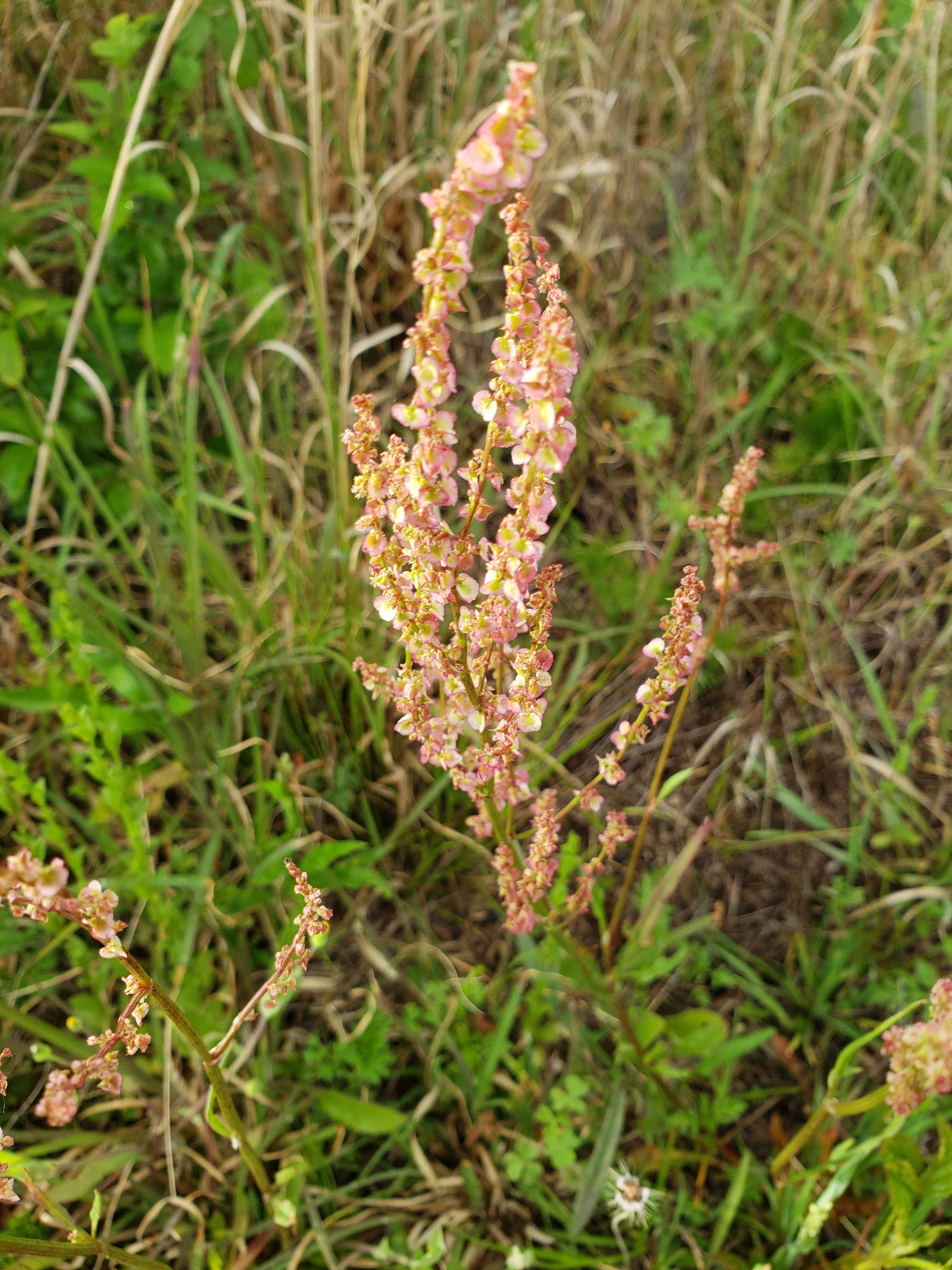
Theres something so cool about dock to me. It's so prolific and still so under the radar. I call it wild spinach but that's not really true I think and is actually in the buckwheat family. When it first arrives it is a humble and cute plant with 3 or 4 little oblong shaped leafs coming out from a tiny center. In only a few weeks the leafs can grow to over a foot long and later its stalk will reach up to 5 feet high. Try to grab the youngest leafs from the plant because the others will be too bitter to enjoy. You might be able to cook out that taste by blanching the leafs in hot water but I can't confirm this for you. I prefer to snack on the leafs when they are still tiny and around 6 inches long. Here is when they will taste green and surprisingly, enjoyably a little tart. When it produces seeds there will be hundreds, sort of sqaure shaped, along the stalk that will fall off or to the wind making this quite an annoying plant for some gardeners, or so I hear.
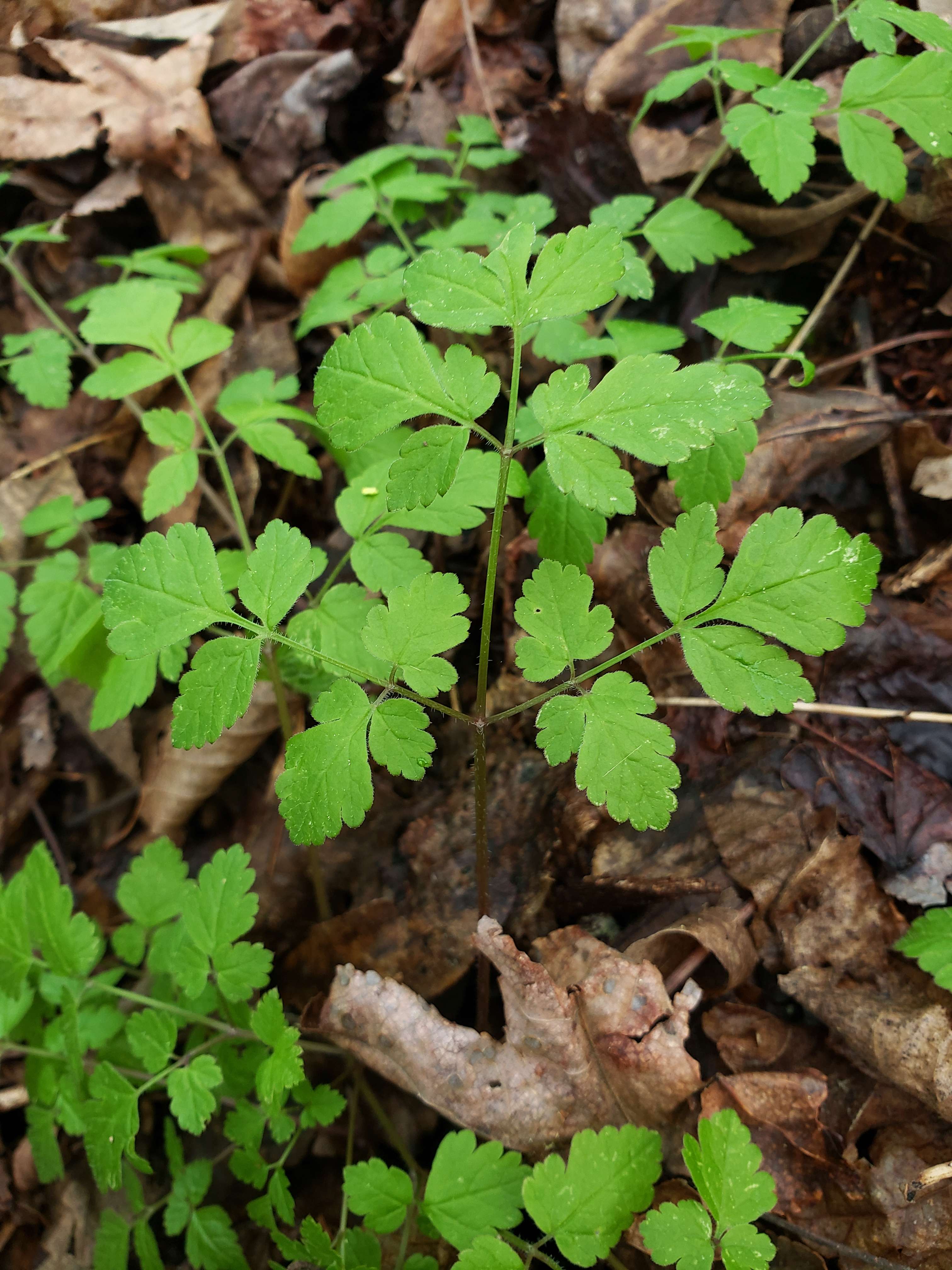
This one is for the licorice fans out here. Claytons sweetroot smells and at least a little bit tastes like anise also known as your grandmothers candy or that weird but sweet christmas smell. It sort of looks like it could be a fern and you can confirm its identity by crushing a small amount in your hands to smell it. These days I can eat black licorice and enjoy it a bit and it's not a favorite taste but I do remember hating it as a child. Thats pretty cool to think about. Now the smell brings me back to my grandmas kitchen on the holidays. I don't know why exactly. Maybe my uncles and aunts smell like jagerbombs.
Pawpaw is Americas secret fruit. It is the largest native fruit in North America. As far as I know they only grow on the eastern side of The United States. It grows on thin brown grey trees that appear all next to each other in large clonal colonies. It has unqiue tropicial looking leafs that smell like motor oil when you crush them in your hands. The fruit as you can see is green spotty brown and its skin is broken through easily to reveal a yellow orange colored pudding textured banana mango fruit. It does have a bit of a wild tang to it and it will have several large brown seeds inside it. But it's very much enjoyable in moderation or when blended into ice cream or perhaps baked into some dessert. It's also very soft. Get crushed in your bag while walking with them soft. This is apparently the reason they are not cultivated yet because they damage too easily.
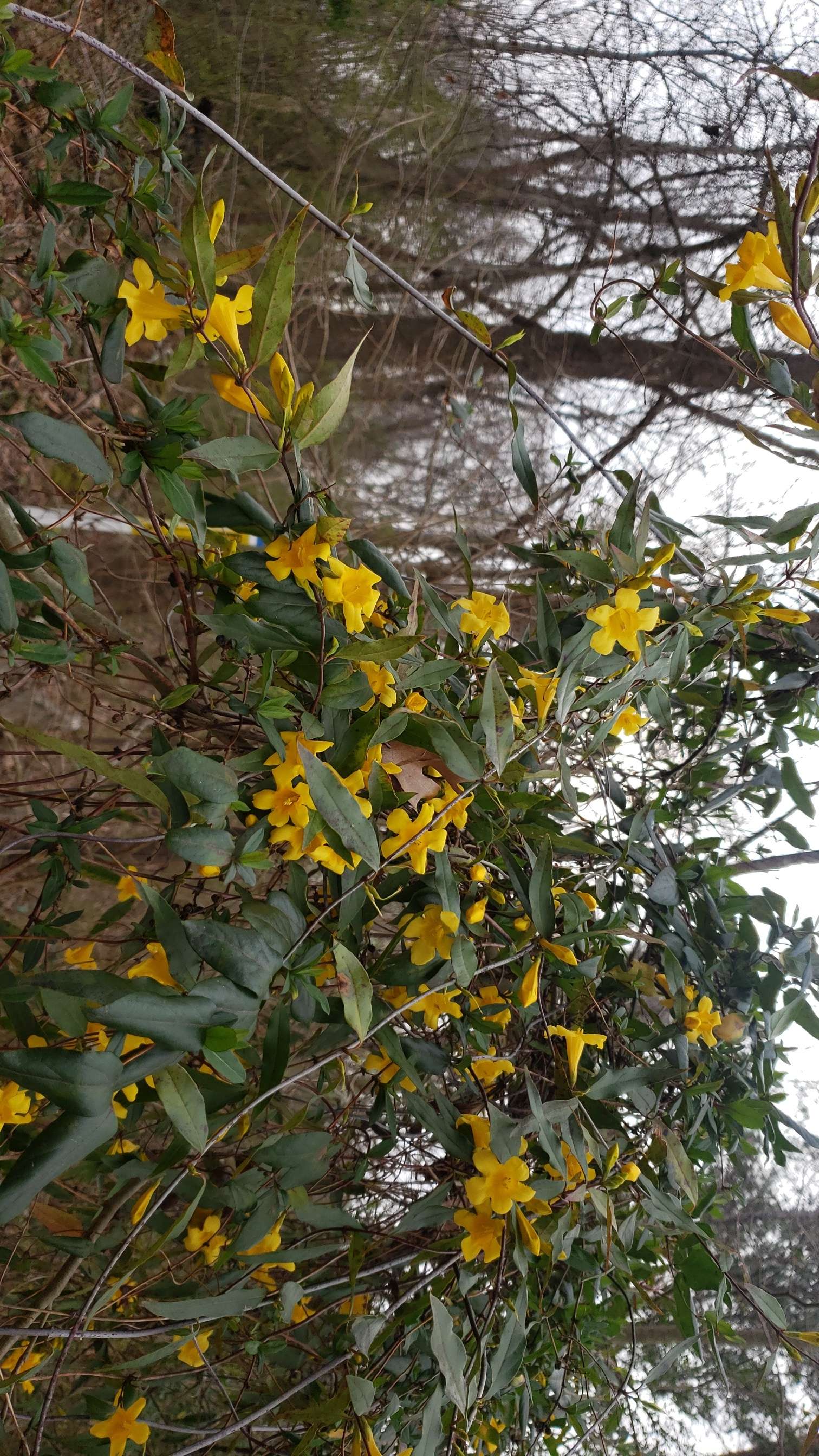
Yellow Jessamine is another early spring treat. You will most likely smell it before you see it and it smells wonderfully sweet. Unfortuneately this plan is reported to be poisonous. How unfortunate when it smells almost like cotton candy. This year I wanted to collect enough of these yellow flowers to make a perfume with them but I was too unprepared. Some research has taught me that I will need quite a significant amount of flower, an odorless alcohol and a carrier oil. Next year I will be ready though and I think with an undertone of vanilla my perfume will be excellent.
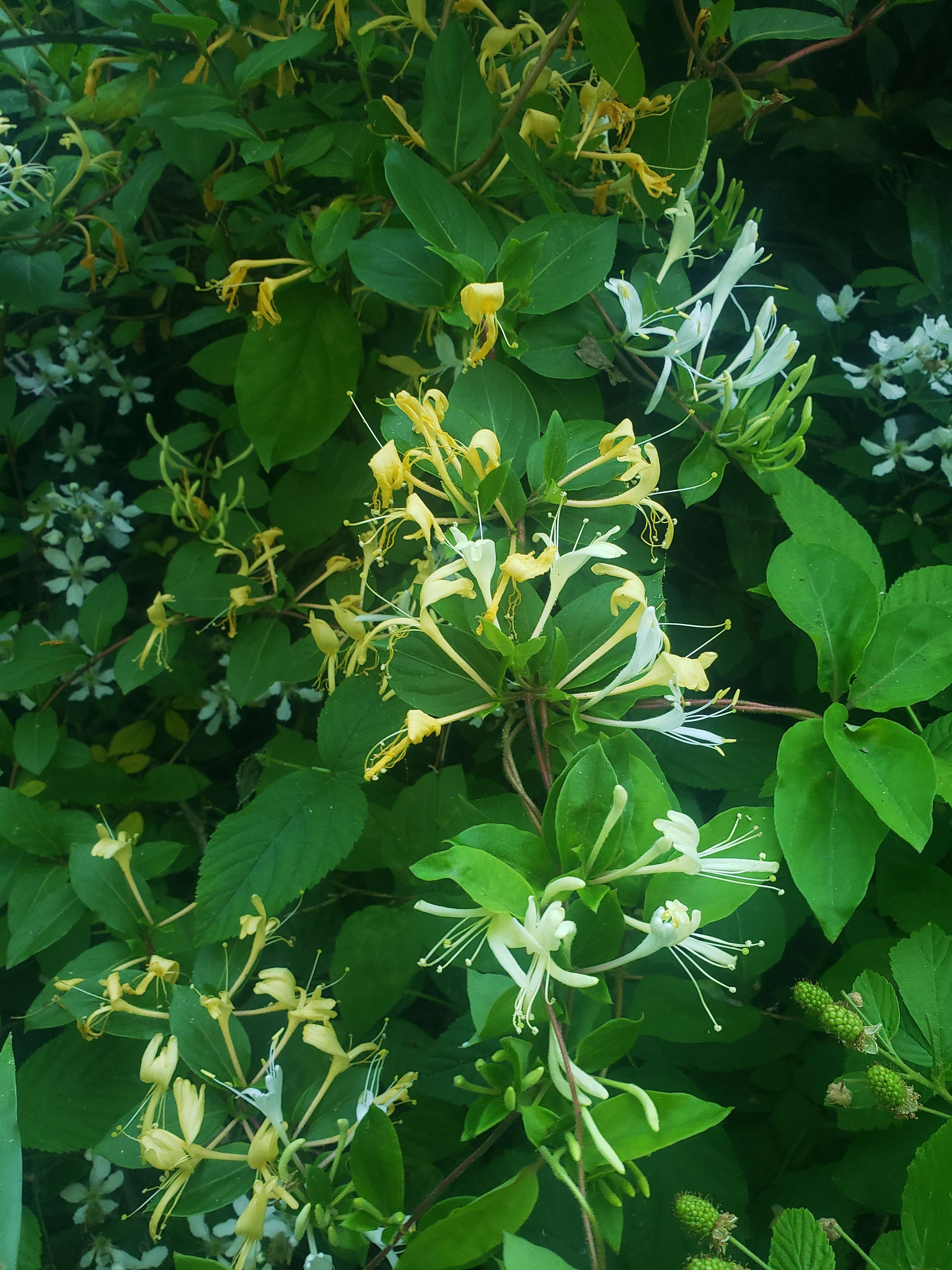
Honeysuckle is another plant I've loved since childhood. When you pull from the bottom of the flower carefully a middle section of the flower will come through it and often with a single drop of nectar that leaves you trying again and again. I collect the unopened flowers to make tea and ice cream with. Very light and floral. Add sugar if preferred, I think it helps bring out the flavor. You can grab the opened ones too if you'd like, but you should pull each of them apart if so. I've found tiny moth larva inside the flowers before. They are pollinated by moths actually. Which is pretty cool. Said to be invasive and theres plenty of it around so feel free to help yourself.
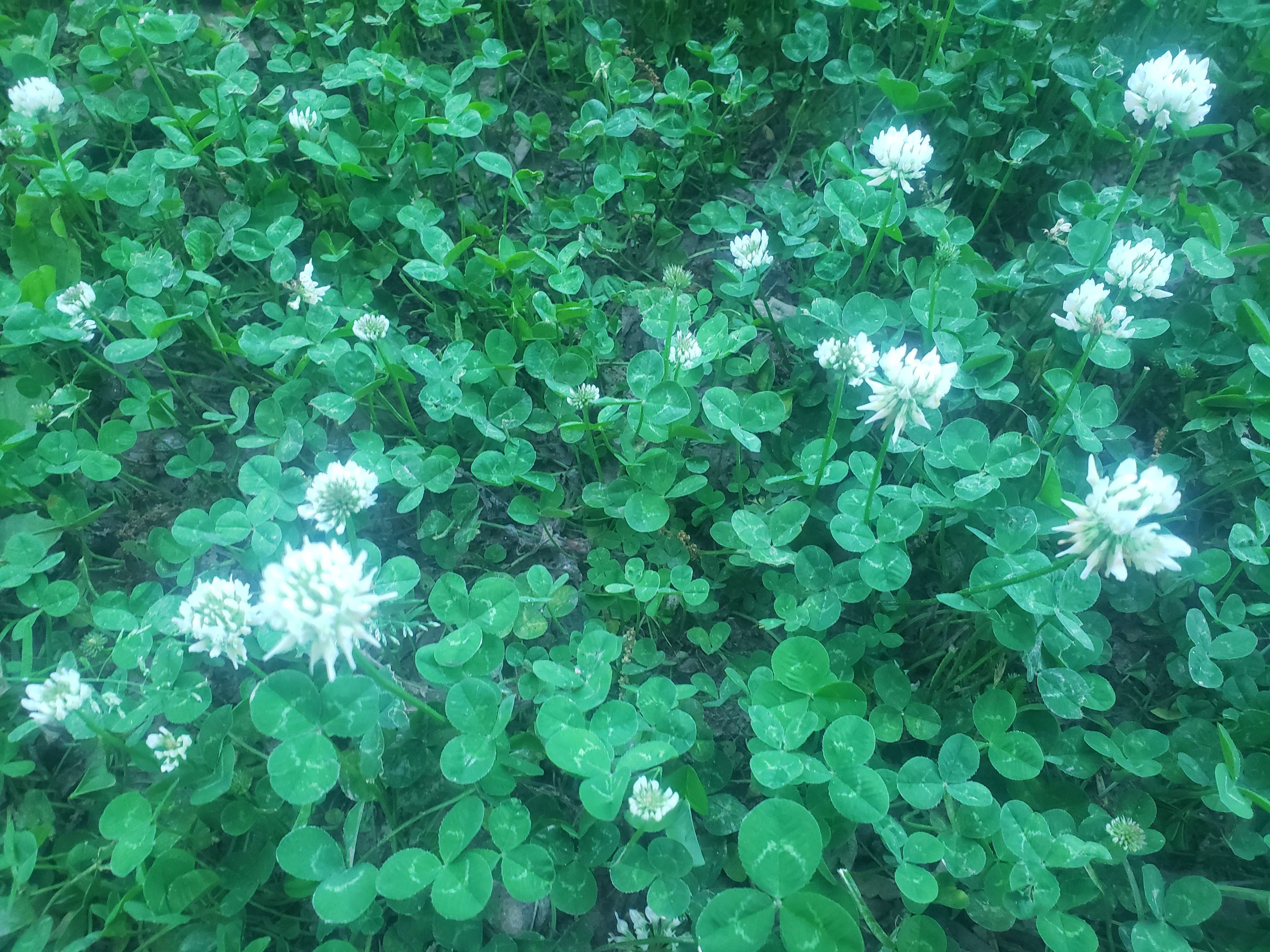
White clover is considered to be a weed by the all the worst people you know. Not only does it secretly smell really good, but it's actually edible too and very high in protein. Bees love these little guys. I think its pretty commonly used for tea and eaten around the world but I don't know much about that right now.

Unfortunately lyre leaf sage doesn't smell much like anything when burned but I think it still repels evil spirits because I haven't seen any new ones show up since I brought some home to try. The tiniest leafs at the bottom of the plant can be munched on for a black peppery flavor but the bigger ones are too tough.
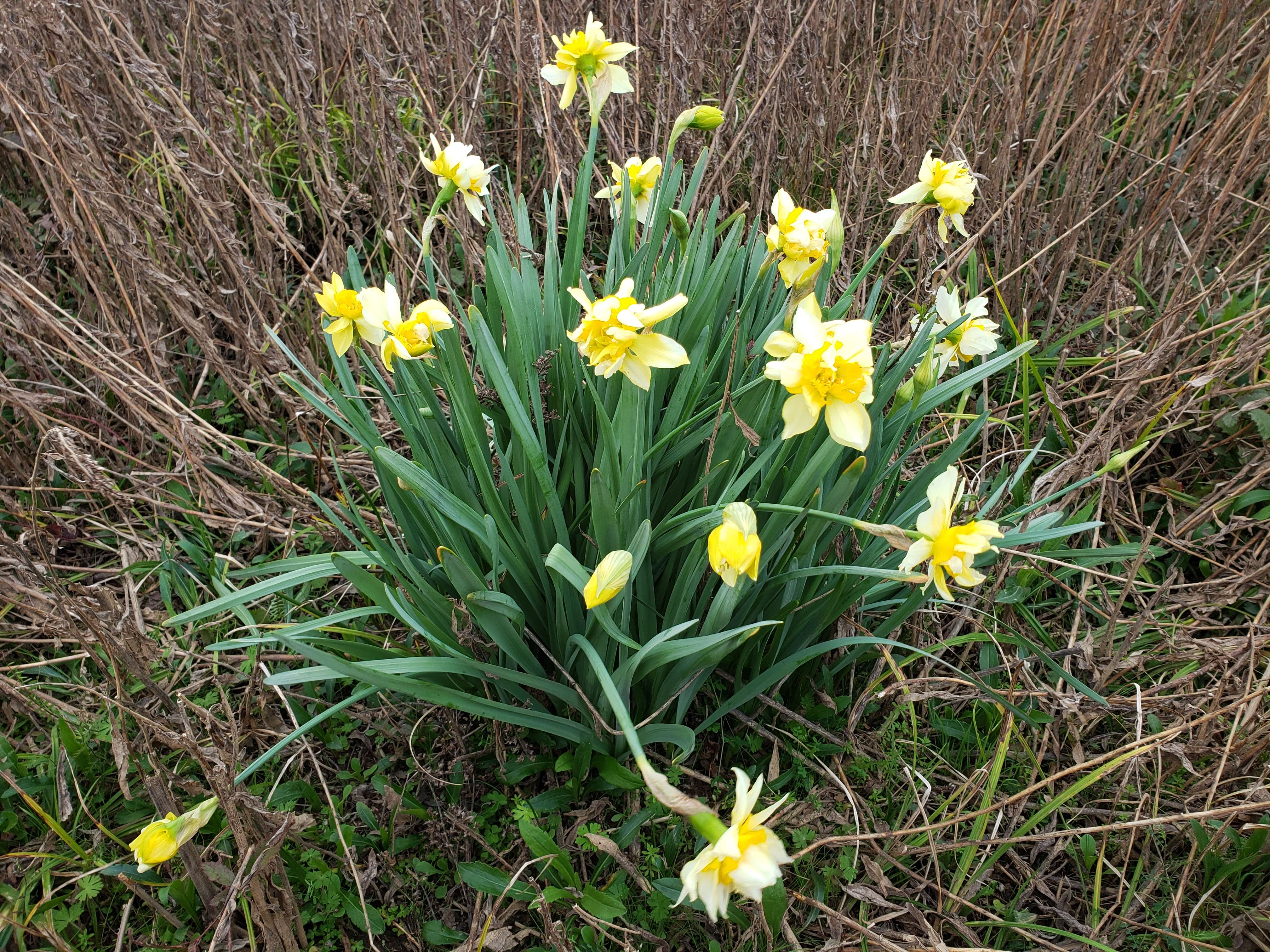
I found these wonderful guys growing in a big empty field. There were maybe a hundred of them all growing together. It felt very magical. Double daddodils come up in early spring. They smell great of course. When they die off an underground bulb containues to grow and store energy until next year. Theres a lot of cool history about daffodils and how people have spread them all around the world because of how pretty they are.
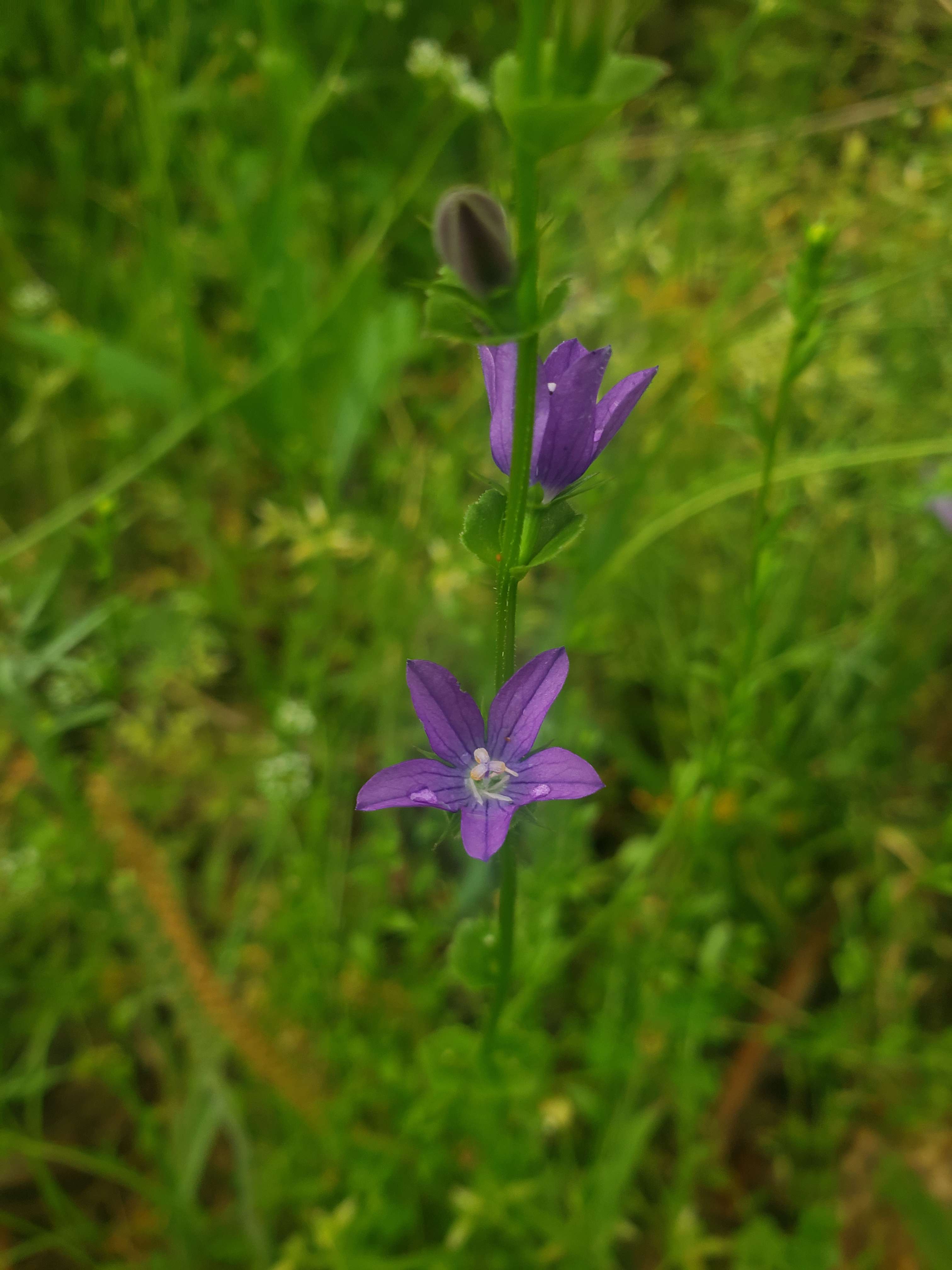
Clasping venus looking glass or clasping bellflower is a very pretty summer wild flower that likes grassy fields and ditches. The first name refers to how its seeds look like hand mirrors. Typically they grow close to 12 inches long but can reach up to 30 inches in good conditions. There is some documented history of pre american native tribes smoking this plant to intentionally make themselves sick.
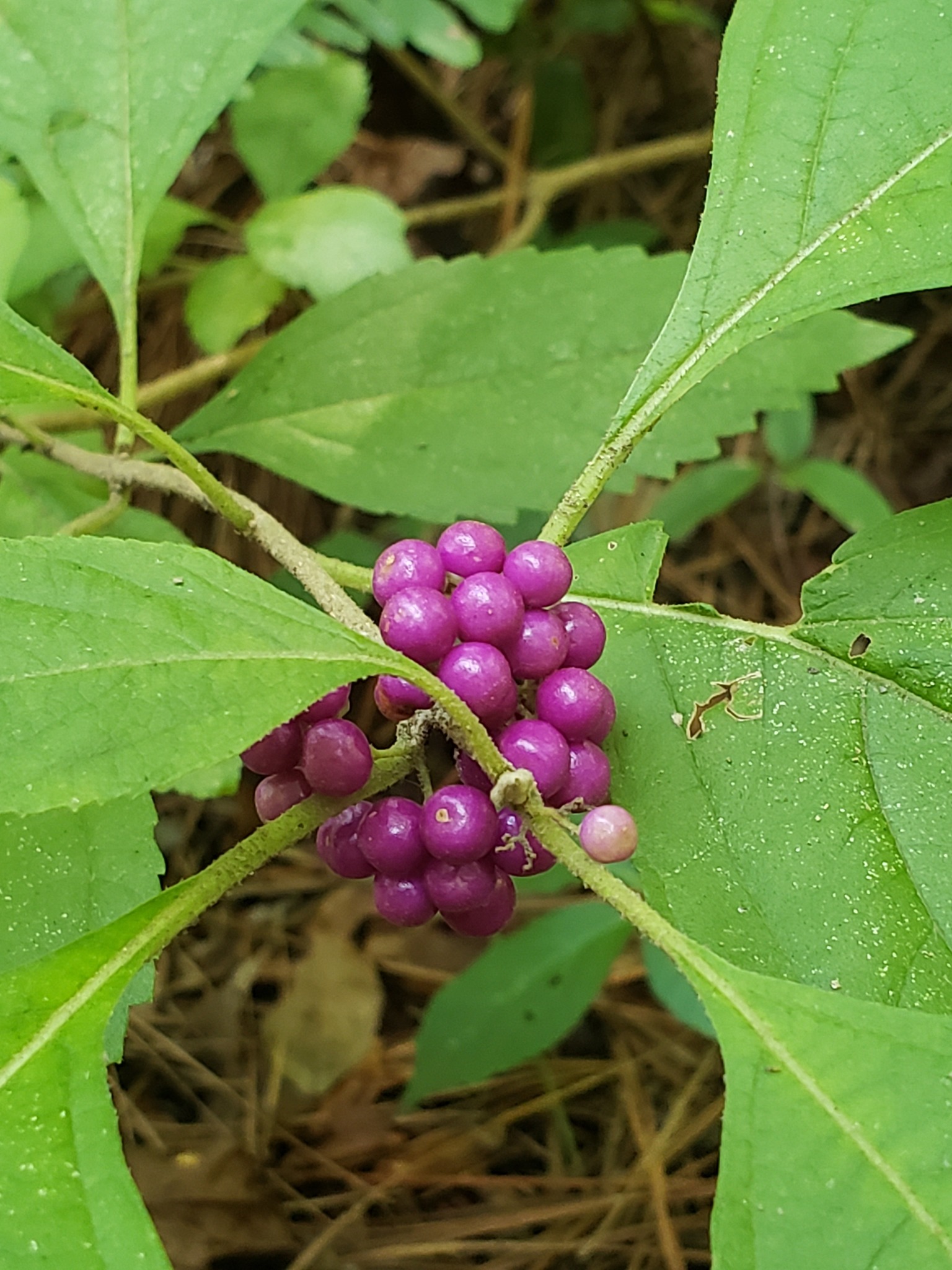
Beautyberry is a great name for this plant. They grow by the dozens in little clusters all over the branches on the shrub. Sadly although the berries are edible they don't really taste like anything at all so it is best to leave them for the wild life. The plant itself is said to be fairly disease, drought and fire resistant.

Phlox is a popular ornamental flower that is also enjoyed by hummingbirds bees and butterflies. This one was about 4 feet tall and growing all by itself just off a trail in the woods. They propogate by seed, division or by cutting its stem. If you can find enough of it where cutting a stem won't damage the majority of the plant consider taking some home for your gardens flying visitors to enjoy too.
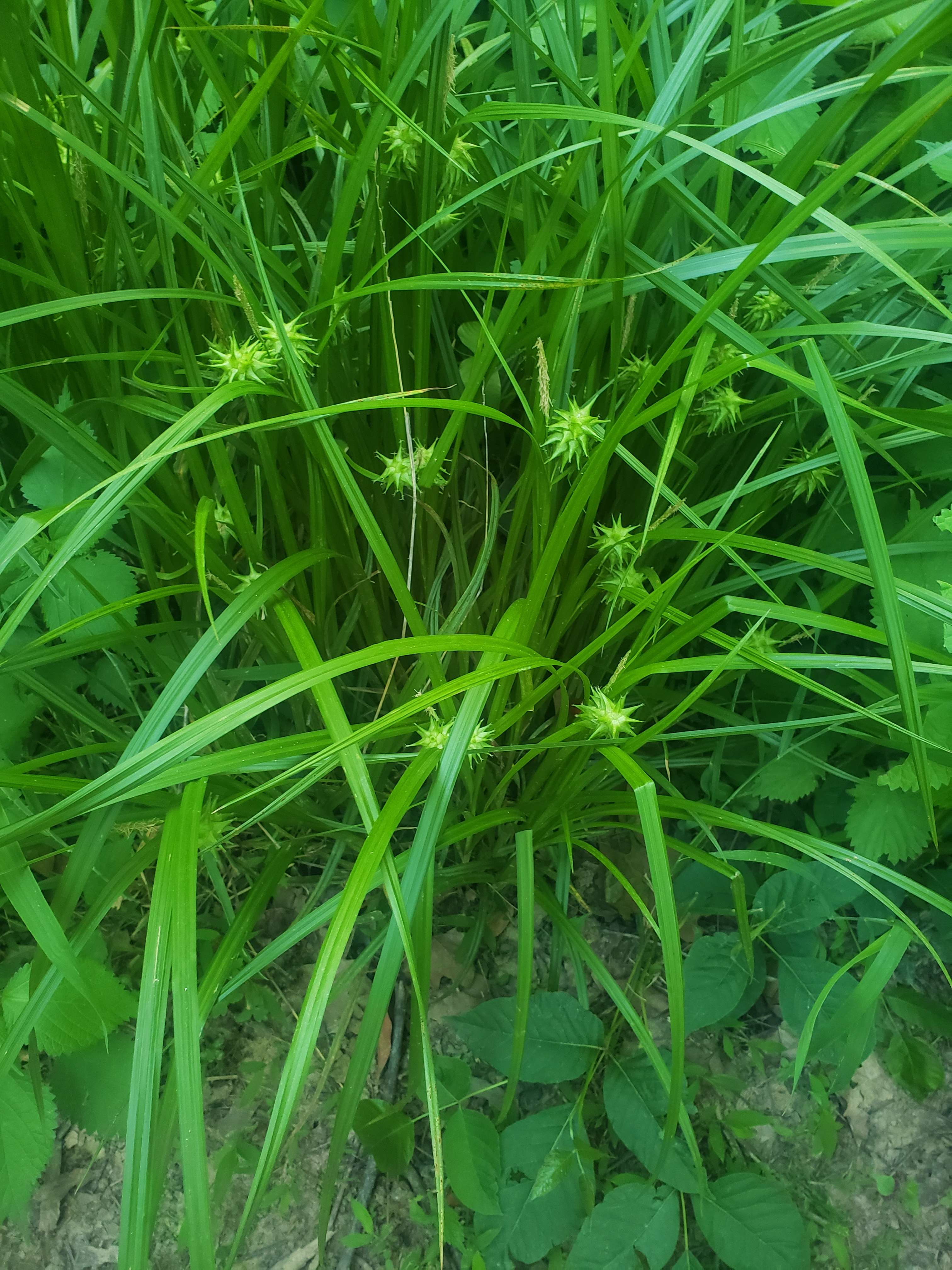
Carex greyi or grey sedge is an interesting grassy plant with spikey ball seeds that grow from it. The grass is large and thick enough to craft with. It like the wetlands, swamps and full sun but does fine on river banks in partial shade too.

This is most like plantago lanceolata or simply plantain. This is an edible plant that reminds me a lot of bulbasaur or the ochu enenies in final fantasy. It is safe to pet. The leafs are very glossy. It taste very green, and sometimes is a little bitter or too tough to eat raw. It gets very waxy, rough and stringy if you try eating them when theyre mature. There is a spot between the roads where tons of these grow by each other. You can put the end of its big stalks in your mouth to feel like a really cool cowboy.
Arisaema triphyllum or jack-in-the-pulpit is a very cool and unique plant. The funnel shaped leaf has an oil on it that makes bugs fall in and stay trapped. I dont think it eats the bugs but its some way its evolves to pollinate. Apparently there is a flower at the bottom of it but I dont remember seeing it when I found this plant. I know youre wondering and no the berries are not edible. At least not without some sort of preparation. I read they cause incredible pain like needles being stuck in your mouth. There is a good article called 'Jack-in-the-Pulpit Preaches Preservation' that has a lot of useful info.

Cleavers are an adorable plant that I love to find. The leafs of this plant have little tiny sticky hairs on them that grab onto everything including themselves. Every year I make cleaver crowns and necklaces and bracelets to wrap around myself when Im walking in the woods. They are great for little crafts. I've seen them grow up to three feet long. This plant is also edible but probably better when cooked because the hairs will get caught in your throat. Its seeds can also be collected and roasted in a caffeinated drink. This plant is somehow related to coffee actually. I dont know if it tastes like that though.

Nopal cactus is most commonly eaten in South American countries. I've seen a few ways of eating it like in soups or on tacos. It tastes pretty light and cucumbery. Im not sure whats going on with its spikes though. Sometimes they are friendly and other times violent. If you get unlucky youll get several very tiny hair width clear needles stuck in to skin and they hurt a lot when you touch them. When left alone can grow 3 to 4 feet high and have many different pads branching out in all directions. Theyre very impressive and cool looking. They also grow bright red fruits on the tops of them which are also edible and good.

Crimson clover is such a beautiful spring flower that completely covers unattented fields and the sides of roads. Youll find hundreds of these flowers together blowing over like waves in a scarlet ocean. These are also edible but I always pick fresh ones in the spring to put in the kitchen as decoration.
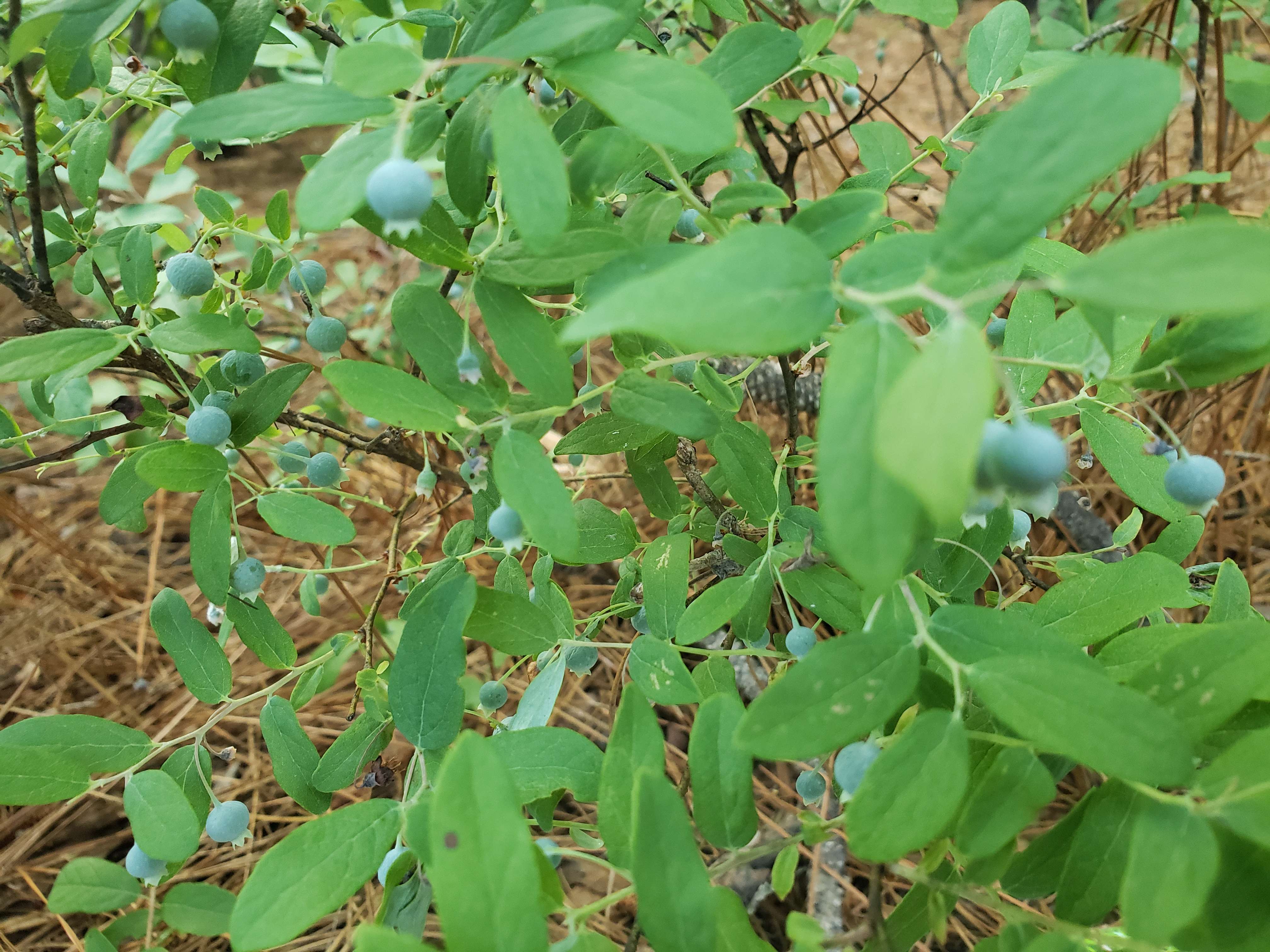
I've even got vaccinium caesariense aka blueberries here where I am. My foraging guide book "Natures Garden" by Sam Thayer mentions there are 30 some species of wild berries. I know of one, maybe two. I was very caught off guard when I found this for the first time. This bush can't be taller than 3 feet and was found in very sandy soil at the edge of a pine forest. The leafs have a fairly unique appearance and help a lot to identify the plant. Slightly glossy, sharp ovals. The other species I suspect of being blueberries too is a much taller shrub and is growing to maybe 7 to 8 feet with even smaller fruit. But they taste exactly like what you'd expect only fresher.

Holly is a very beautiful plant that I've been around all my life for better and for worse with its pokey spikey leafs. It always evokes a christmasy feeling seeing them. They don't lose their leafs during the winter either. They actually have adaptive genes and will grow sharper leafs in response to threats. The berries although beautiful are inedible to us.

You might know field garlic from the smell of mowing the lawn in the spring. The long stringy green tubes grow out from clusters of little bulbs in the ground. I've never found them very deep maybe 3 inches into the ground. They have a definite garlic/onion smell when crushed. Be positive of this feature if you attempt to forage this because it does a a deadly look alike called toxicoscordion venenosum, death camas. I prefer to crush the entire plant into a paste before cooking with it because it can be a little stringy. You'll have to collect a handful or two because its not as pungent as cultivated garlic buts it is free and it grows everywhere.
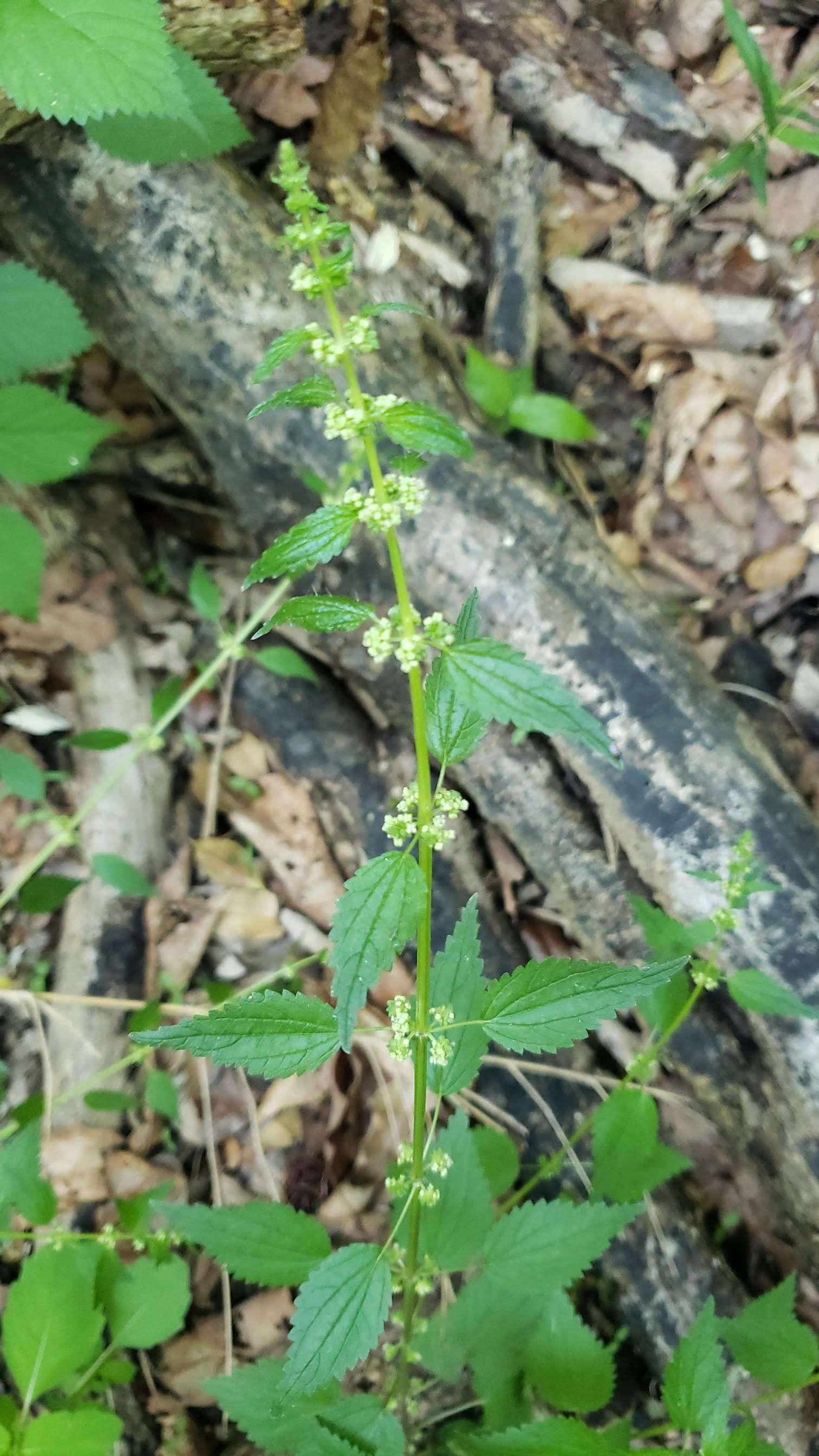
Last spring I finally found stinging nettle when I was in the swamp crawling over logs to get to a bunch of mushrooms that I hoped were oysters. Until this day I had only ever found a look a like called bog weed, as well as wood nettle a stingless nettle. I remember it brushing against my shins and feeling like being poked with hot needles. It stung like this for at least 9 hours until I went to bed. There was a weird sensation of my legs being wet too. I did not come prepared to take any home so I didn't but I do know these are edible if blanched to nuetralize the plants stinging hairs. If its anything like wood nettle its green and spinach like and is said to be very nutritous.
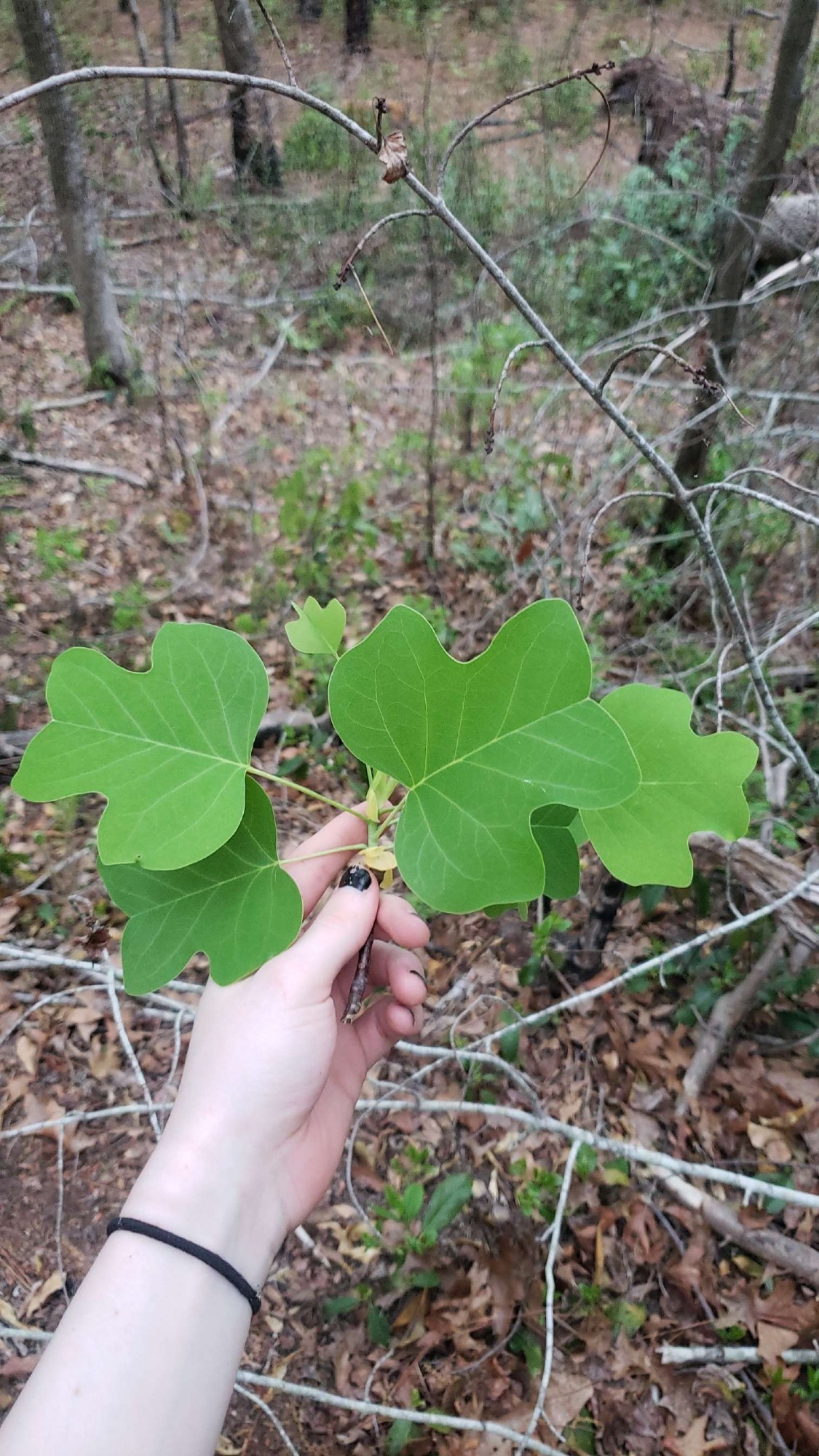
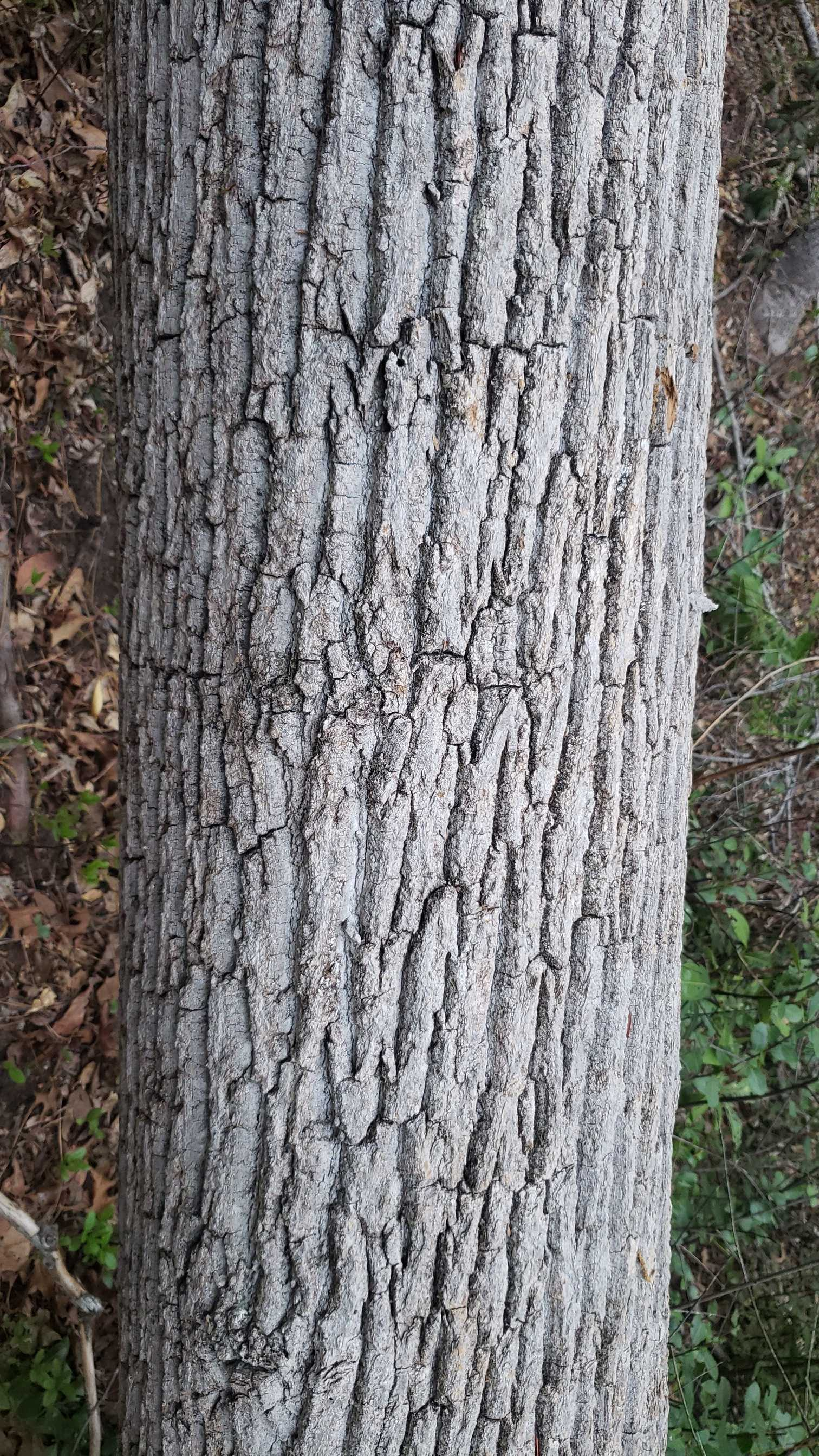
In my eternal quest inside the torment nexus I have been tasked with learning how to identify trees in order for a chance to find the highly coveted morel mushroom. This is the leaf and bark of the tulip poplar tree. This tree can be very large or small, the bark very light or dark can be both very smooth or rough sometimes even, very wide braches that are very narrow. Sound confusing to you? The best way to learn trees I think is to just go out and take photos of leafs until you start to differentiate between them. They also have very interesting flowers that are easily identifiable. It seems like a very daunting task because still to me so many trees look identical but I'm making some progress and will add more trees soon.

To be clear this is not a plant but a lichen which is a symbiotic organism of fungus and alga. However it looks very plant like and I dont have a lichen page yet. These green little orbs are hard and brittle when theyre dry but when wet immediately turns into squishy sponges. Theyre not solid blobs but a bunch of very small and crowded algea branches. Apparently deer like to eat them so they're called Reindeer Lichen. They grow only in the northern hemisphere and can live up to a hundred years. Theyre edible to us too but I haven't tried it. I tried keeping one as a pet but they grow incredible slow and I couldnt tell if had died or not so it was returned to the earth after my cat knocked it over.
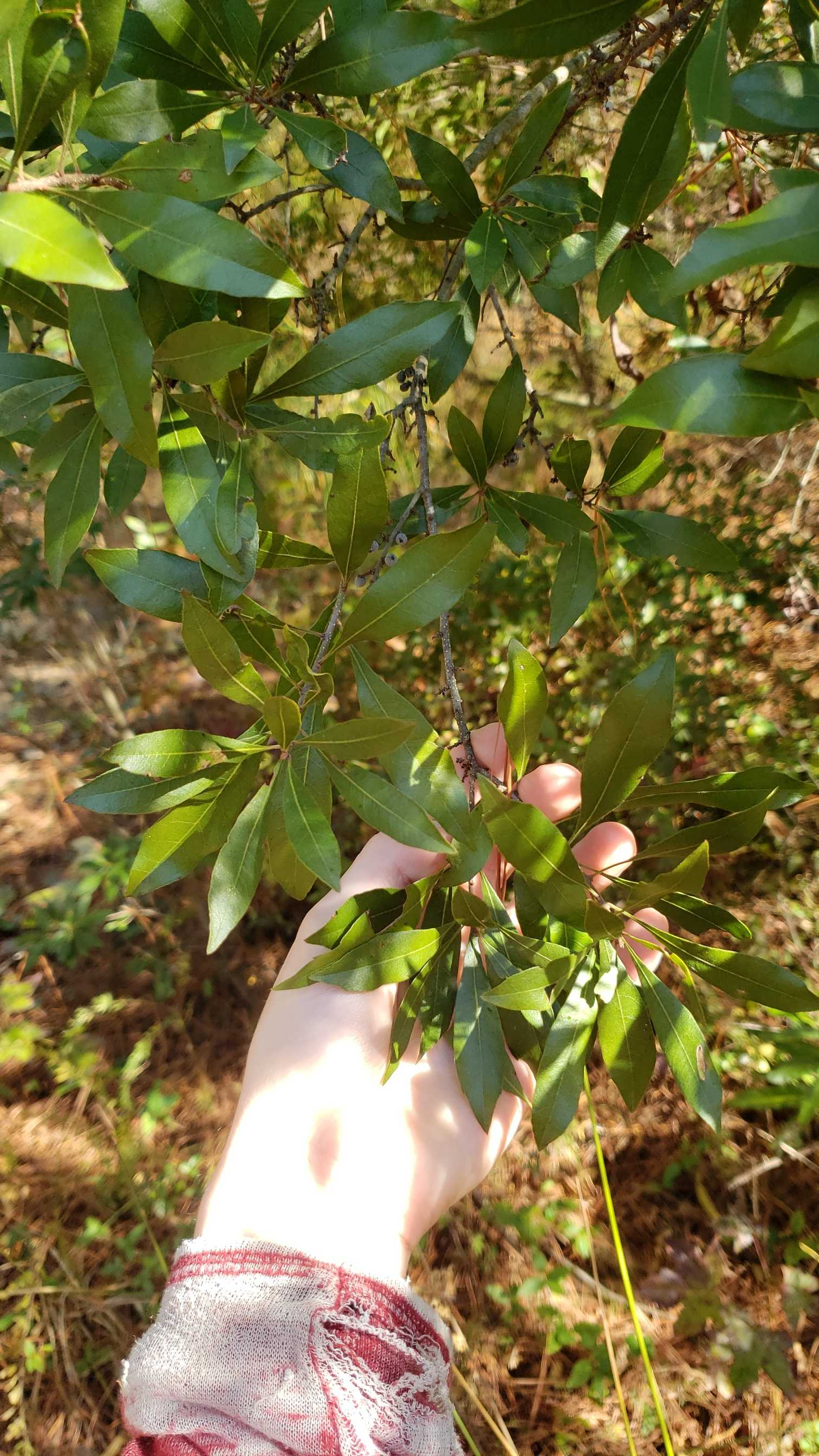
Waxing myrtle is another tree I've learned recently with the help of another local forager named Matt. I don't think they are particularly large trees but they do stay green through the winter. They have tons of little blue berries on them that can be used to turn into candle wax and the leafs can be used like bayleaf. You can help identify it with the smell of one crushed a little bit in your hand.
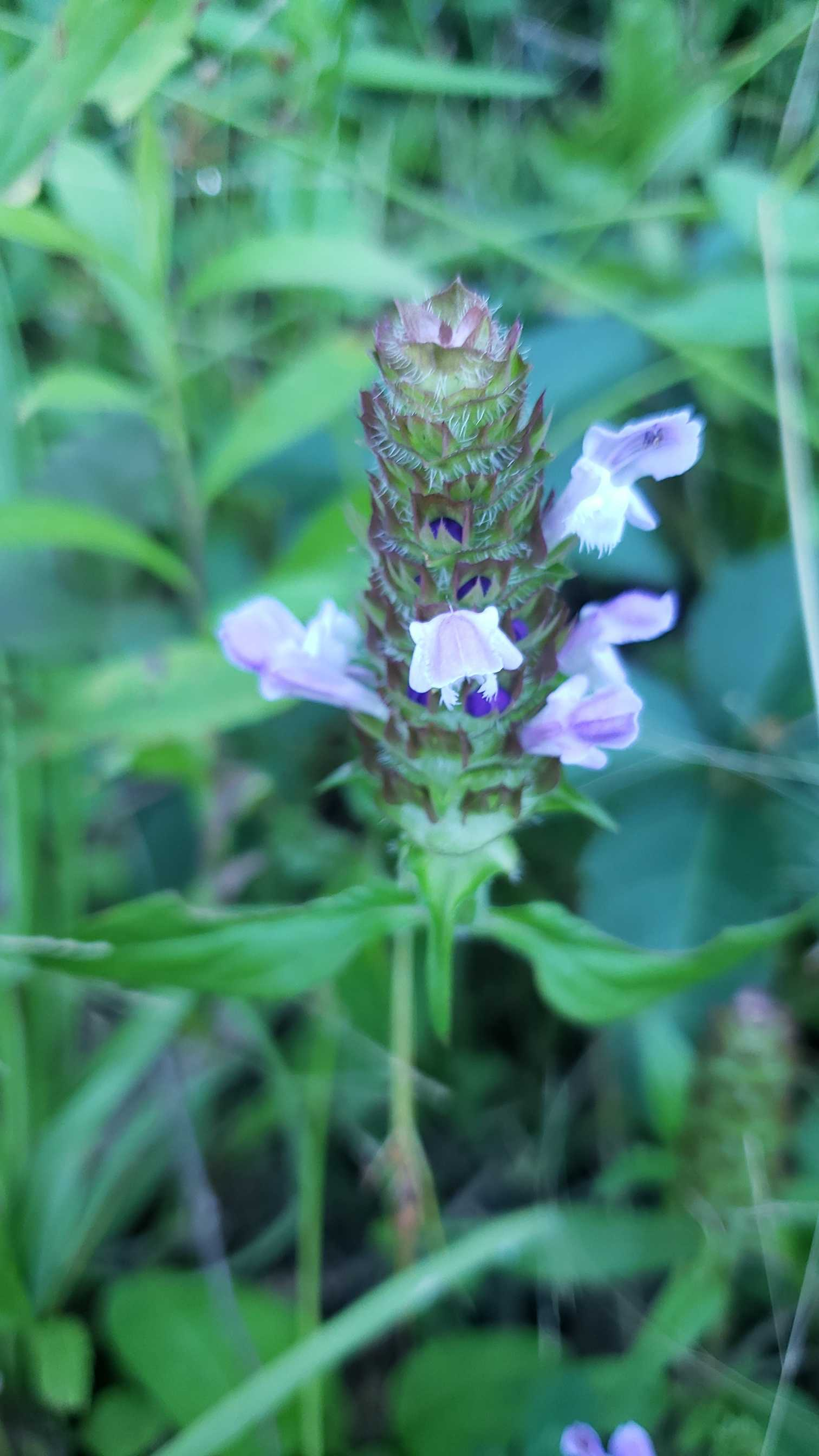
Self Heal/Heal All is an edible plant that likes to grow in short grasses, in yards and fields, on the sides on roads. Its a bit of an aggressive grower and can take over huge areas. Its in the mint family and has a square stem like other mints do. You can feel this between your fingers easily. It doesn't taste like mint at all really. It tastes pretty mild and greeny, sort of like rosemary. It has a long history of being used as medicine hence its name.










